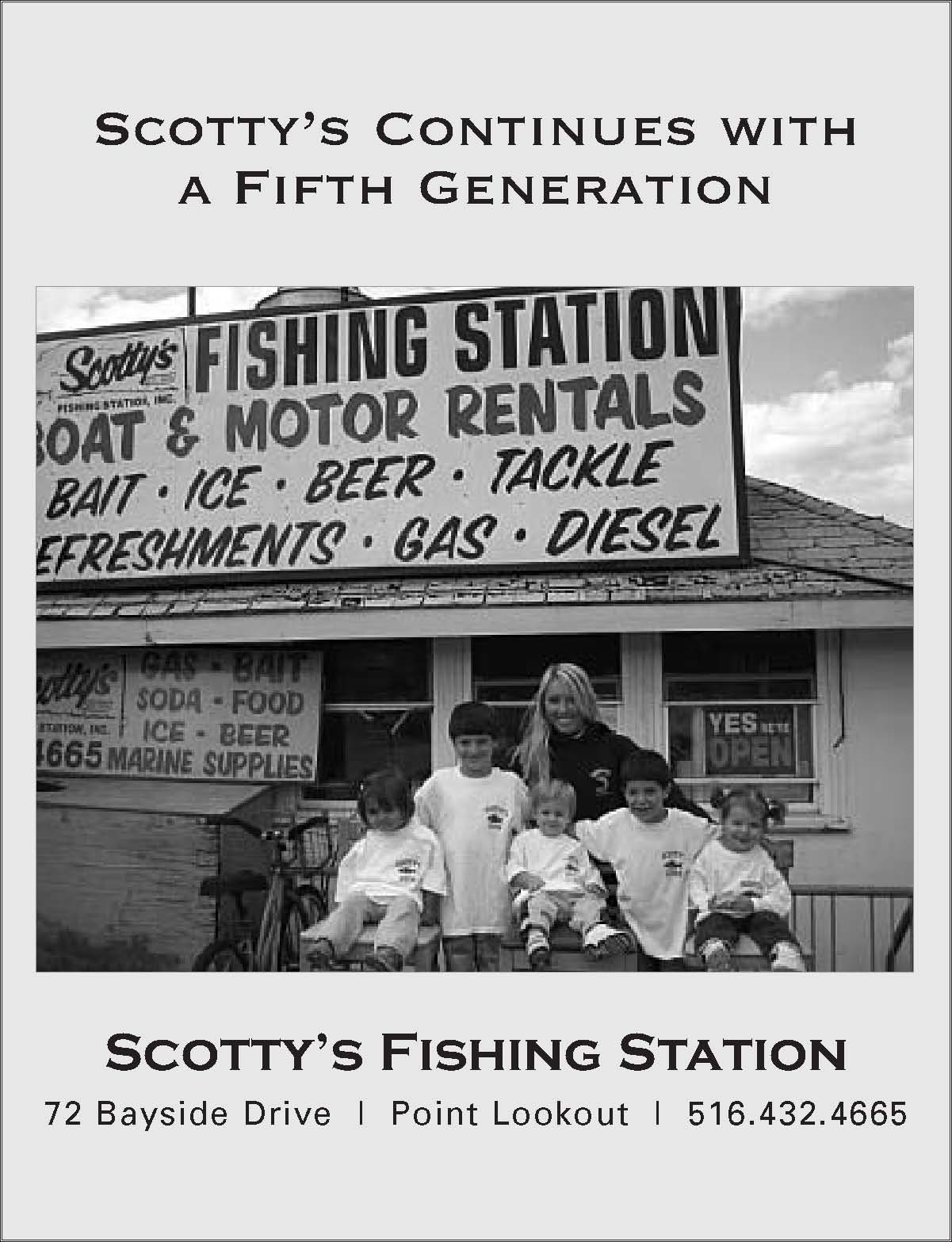
Point Lookout, Long Island, New York, U.S.A.
The Outlook
October 2006 | Vol.1 No.1 | POINT Lookout, NEW YORK
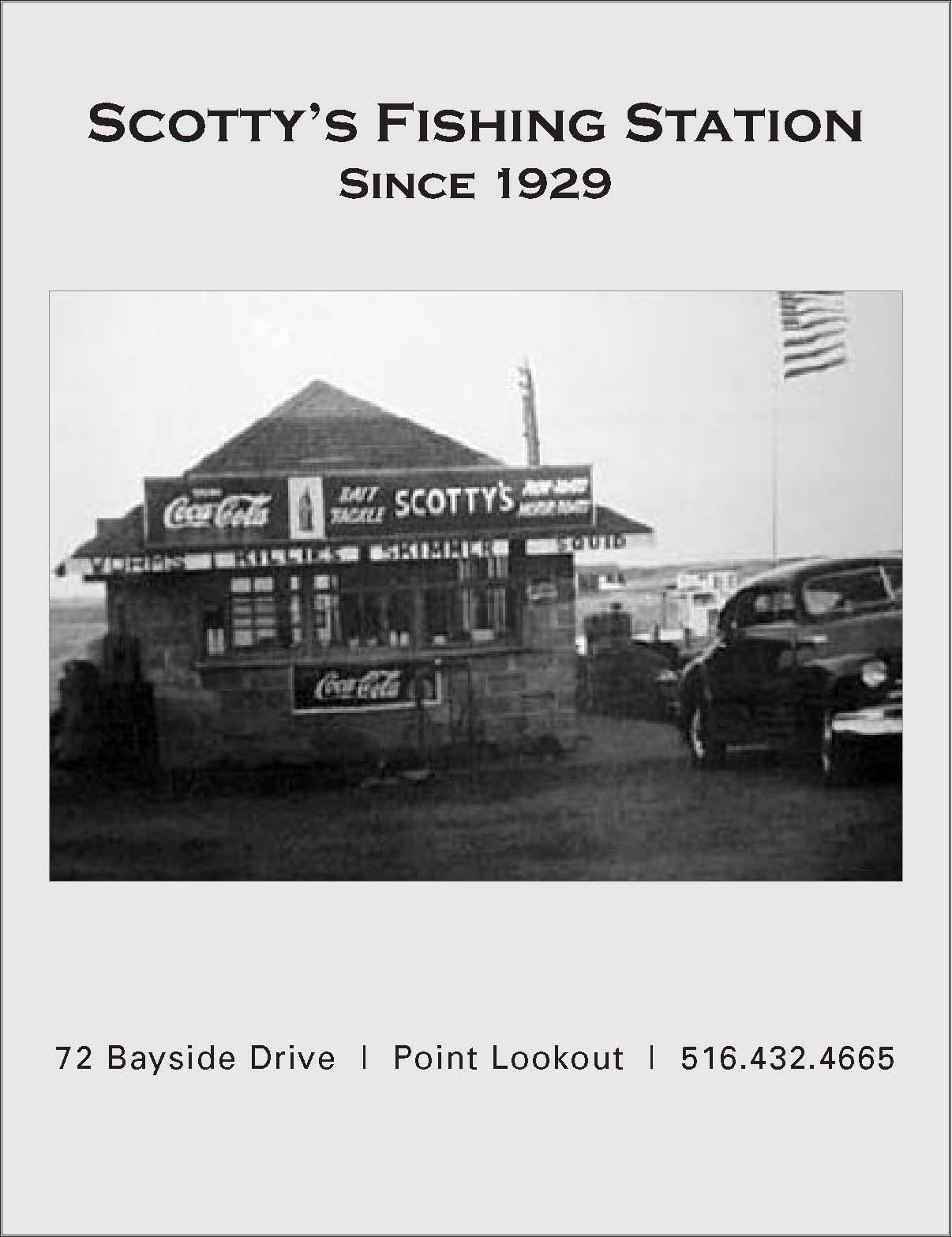
| ||||||||||||||||||||||||||||||||||||||||||||||||||||||||||||||||||||||||||||
| Letter from the Editor Brendan H. Cahill | 5 |
| The Marine Railroad | 7 |
| Awakenings Mildred H. McGinity | 11 |
| Nassau-By-The-Sea Lou and Cathleen Sherman | 16 |
| The Pig Who Ate Ice Cream Tom Dier | 18 |
| The Early Church Tom Dier | 19 |
| In Retrospect – Point Lookout in the 1930s Mel Brown | 21 |
| The Lost Point Lookout and the Great Rock Sea Wall Bob Doxsee | 25 |
| An Obituary on Old Pete Makes Past Live Again Philip H. Dougherty | 31 |
| Point Lookout in the Early Years: One Man’s Recollections John D. MacDonald | 33 |
| The Lookout | 39 |
| Point Lookout Civic Association Celebrates 75 Years | 40 |
| RosemaryDowling | 43 |
| Mel Brown | 44 |
| Sponsors | 47 |
The Lookout is an annual publication of the Point Lookout Historical Society,a committee of the Point Lookout Civic Association, and is free of charge to all residents of Point Lookout. It is a labor of love: no writer receives any remuneration of any kind; all donations, which are tax deductible, go to cover design, printing, and postal expenses.
The Editor “When I speak of home, I speak of the place where — in default of a better — those I love are gathered together; and if that place were a gypsy’s tent, or a barn, I should call it by the same good name notwithstanding.”
Charles Dickens. Nicholas Nickelby
Dear friends and neighbors:
As children we are taught that the world is constantly in motion,although the ground stays firm beneath our feet. Our days turn into nights, our summers turn into autumns, our months turn into years. Later on in this issue is an article by Bob Doxsee about the shifting inlet,and the time,in the early 1940s,when the beach along Mineola Avenue was being cut away and houses were in danger of falling into the water.The photos that accompany his article show a dramatic change in the topography of our little town,the shape of which only stabilized when the Jones Beach jetty was put in. Even then, the sands still shifted around our little point. It is not so long ago that “Drop Beach” ran along the inlet, and was the scene of cookouts and bonfires, and dangerous swimming that our mothers warned us of.The sand has filled in along the bay,just as it narrowed along the Ocean.We now must fight once again, as we have in the past, to have our beach replenished.
As the sand shifts, so does the town. In this journal you will read of a railroad that ran to Point. Lookout during summers, 125 years ago, when all that stood here was a resort hotel and a few scattered cottages. Catherine Sherman and Tom Dier write of their summers in Nassau-By-The-Sea in the first decades of the 20th century,before it burned,before the developers came and filled the creek and marshland in with sand and created our town. Mel Brown,Phil Dougherty and John D.MacDonald write about life in the 1930s and 1940s,after the streets were paved,as it began to grow.When we write about Point Lookout,we write about different Point Lookouts; we watch them as they blur one into another. Our Point Lookouts are constantly in motion.
I live in the home,at 74 Glenwood Avenue,that my great-grandparents bought and that my grandmother, Mildred H. McGinity writes about.There is a photo of it, nestled in the dunes with the Korndoerfer house and seemingly nothing else other than sand and sedge grass. Can I say that I live in the same town that my great grandfather did? It’s so radically different, but that same breeze from the ocean cools us at night and I sleep in the same room as he did.I always look in old photos for his house,for his community,so I can mentally lay it onto the street grid of mine.The house becomes an extension of our familial bonds – I live in the house that my grandmother and her siblings, and later my mother and her siblings grew up in, where my father met my mother when they were teenagers, where my cousins all gathered during summers when I was young. It is that continuance that I love most.
People love Point Lookout for so many reasons, and not just because of its physical beauty.A friend once said it was like they had gone through a time wrinkle and ended up in Brigadoon. Over the decades, families stake out the same spots on the beach each summer. It can take forty five minutes to travel a block home because you end up in three conversations on the way. Friends’ children and grandchildren play together, marry one another, and comfort one another in times of stress.As a town, we’re relatively young – there were no revolutionary war battles fought here, no Native American burial grounds, but history is all around us still.We are so blessed to have people who have lived here for many years, have taken over the businesses that their parents or grandparents ran. I love the idea that there are so many clans in Point Lookout.That stability makes our town more of an extended family.
When we celebrate our town, we celebrate its community, its people.This past summer we celebrated the 75th anniversary of both our Point Lookout Civic Association and our Volunteer Fire Department. One organization aimed at saving our lives, the other at protecting our way of life. Be involved with both, support both, for, like the sand we walk on, we cannot take them for granted.The Civic Association is as strong as its members; if you feel it doesn’t do enough, then get involved.You will find a membership form in the back. It only costs $35, less than $3 per month.
I must thank a number of people who were instrumental in supporting the idea of this journal. First, President Herb Abbe and the officers and board of the PLCA, for their leap of faith. Secondly, Don Kelly, PLHS Co-Chair, who saw the value in this project and was always a friend. Last, I would like to thank the sponsors, those friends, family and neighbors who sent in donations so that the journal could actually be designed and printed. The Lookout is given out free of charge to every mailbox in Point Lookout and it is only due to their generosity that we were able to produce it.
The Point Lookout Historical Society, a committee of the PLCA, is devoted to maintaining a record of those who lived and live in this town, of its homes and businesses, so that we can keep it the unique place that we know and love.
Last Sunday I walked south along the inlet with my daughter, Helen, towards the Rev’s House, as we call it, and the ocean. She was collecting flowers and twigs, and I was taking photographs.We had come around a bend in the path and Helen was ahead,singing, and I felt this enormous sense of being both outside time and part of it, of having walked that path hundreds of times and never been bored with it,and knowing that we were safe and at home. I look forward to hearing more stories from our community, and printing them, and piecing together the quilt of history to celebrate this remarkable town. �
The Marine Railroad
During the latter half of the 19th Century, people began to flock to the East Coast beaches as one of America’s favorite places to play. With the introduction of the railroad these beaches became even more accessible and popular with the general public. In 1880 the grand Long Beach Hotel opened. The hotel’s close proximity to the city and its spectacular beaches soon made it a favored summer destination for harried New Yorkers.
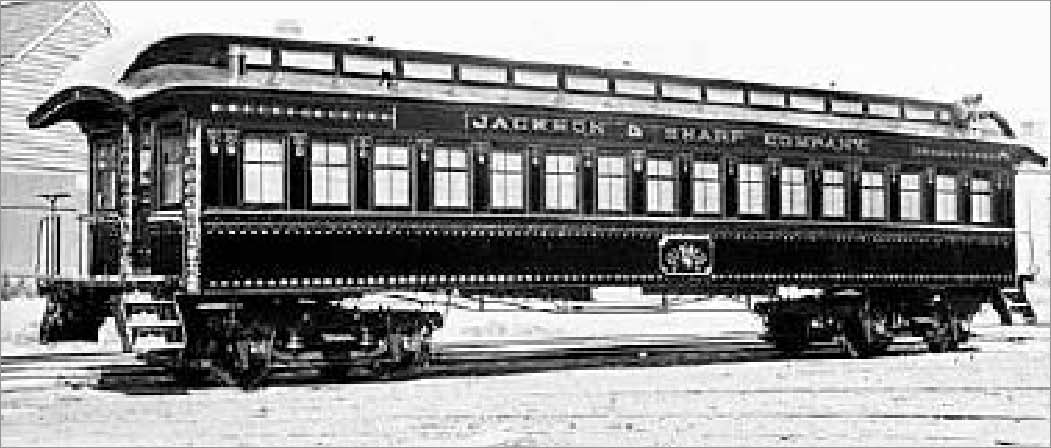
The triumph of the Long Beach Hotel’s inaugural season was such that, by the next year, plans were already underway to create an annex several miles to the east, opposite the “broad and breezy” inlet which separates the end of the barrier beach from Jones Beach. It was considered an ideal area for pleasure-cruising yachtsmen, as well as for hunting and fishing, and no less than The New York Times noted that few places could have been selected for a hotel near the city with “better facilities for bathing and fewer facilities for drowning”.The beach was entirely desolate,with the exception of Life Saving Station #32, and upon this blank canvas a three story hotel, in the Queen Ann style that was so popular during this period, would be built. In addition, ten elegant two story cottages and bathing houses would be scattered around the beach for guests in need of greater privacy.
However, in order to provide the lumber and other building materials to this remote site, as well as eventually transport the guests to and from the ‘Point’, a railway connection was required. In early 1881, the Long Beach Construction Company commenced the building of a marine railroad which was to “commence east of the Long Beach Hotel, running along the beach by the most feasible route and terminating at the east end of Long Beach.”
With Italian immigrants working night and day on the construction of the tracks, the promoters set about purchasing the trains.The New York City Elevated Railroad agreed to sell two obsolete engines and two passenger cars that had previously run on the 9th Avenue El for the bargain price of $7,000.
And so in only two months, in May of 1881, the Marine Railway was in full running order –moving smoothly along the deserted beaches at a top speed of sixteen miles per hour.The cost had been $138,575 (roughly, $18 million today).
With the railway now able to transport supplies and labor to Point Lookout with little difficulty, work began on the hotel and cottages. James H. L’Hommedieu, one of the most prominent contractors and builders on Long Island, was in charge of over one hundred carpenters and painters—and by late August 1881 the hotel and cottages were opened to the public.The newspapers, invited down to take a look about, were pleased:

“Looking from the eastern portico,nothing can be seen but a vast stretch of sand,a still vaster stretch of blue water,and one or two ancient houses far in the distance.In the night only the stars and the Fire Island light can be seen.Boats and fishing tackle have been provided for fishermen and there will soon be geese and ducks for sportsmen.The Theodore Thomas orchestra performs twice daily on the veranda,where ladies bring out their work, the gentlemen take unto themselves cigars,and while the strains of music harmonize with the swish of the deep, everything is delightfully peaceful and pleasant.”
Large groups soon began to travel down to the previously inaccessible Point Lookout beach via the Marine Railway.The railroad ran every hour between Long Beach and Point Lookout, with a ten cent fare and crew of two on board.
But with the hotel and railway having opened so late into the 1881 season, the investors simply could not recoup the expense of their construction; and several storms over the next winter would further damage the Marine Railway and add to the cost overruns.
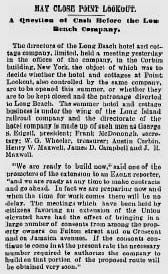
|
Although the 1882 summer season was a splendid success, with over 18,000 people (including Oscar Wilde) making the rail journey out to Point Lookout, the company ran at a loss for a second straight year. Even with the hotel and cottages (at $500, $750 and $1,000 for the season) booked up for the entire season it could not outweigh the debts the company had incurred in the construction and repairs.The same scenario would play out for the next several years — the winter storms washing away the tracks, and with them the investors’ profits. By 1884 the Long Beach Construction Company was in foreclosure and in early 1885 Edmund P. Schmidt, a 35 year old Wall Street broker, bought the property. Schmidt was a well known figure throughout the New York financial world, a partner of Henry Villard and Sam Ward, and an accomplished yachtsman and bon vivant. In 1885 Schmidt bought the Point Lookout properties, intending them to be used by a consortium of his friends and business colleagues as a sort of rich man’s clubhouse.Although the social organization had many prominent New York politicians and tycoons among its members, the ‘Point Lookout Club’ venture quickly soured, and by the close of 1885 unpaid merchants had filed liens upon the properties and the furniture at the hotel was levied. In January of 1886, the Long Beach Hotel and Cottage Company and their largest shareholder, Austin Corbin, stepped in and bought the Marine Railway and the Point Lookout properties from Schmidt for $62,000. Schmidt soon went bankrupt and was later imprisoned for passing hundreds of thousands of dollars of bad checks around New York. |
Alongside Robert Moses and others, Austin Corbin is one of the giant figures in the shaping of modern Long Island.Taking over the dilapidated and bankrupt Long Island Railroad in late 1880, he set forth on an ambitious plan that would eventually create the most dominant and successful suburban railroad in the country.
As the author of a history of the Long Island Railroad wrote:“it was Corbin who spent millions modernizing the roadbed and equipment and keeping the road in the forefront of first-class carriers. No other president of the road before or since commanded the immense wealth, wide influence, expert financial knowledge and potent political connections.”
Corbin may have been a visionary but he was also a hard headed businessman – and he quickly realized the potential for personal riches that awaited those who could exploit the new commuter rail system to their advantage. He had successfully set up several resort hotels on the desolate Brooklyn shoreline and created a transportation infrastructure that enabled the masses to travel there with ease.Corbin now attempted to bring this same magic to Long Beach and Point Lookout where others had previously failed.
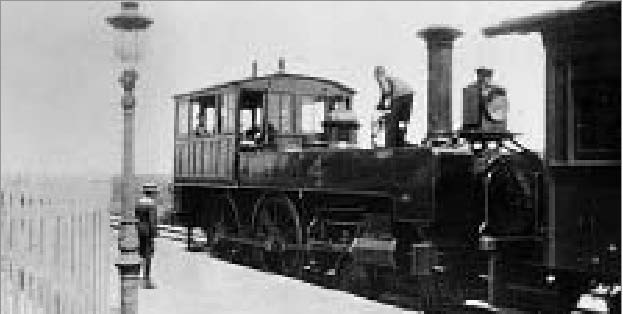
Undeterred by the failures and storms of the past,Corbin set about to repair the Marine Railway yet again.In the winter of 1885-86 a thorough overhauling was required with timbers replaced and old rails relaid.Laborers on a “sand train”traveled up and down the line carting sand to fill in the eroded areas. With Corbin now in charge, the Marine Railway was also incorporated into the Long Island Railroad system, enabling direct trips from Long Island City to Point Lookout.
The renovation temporarily helped matters, but by September of 1889 the beach was struck again by a severe hurricane.The cottages were still occupied and the occupants became concerned as the gusts of wind and heavy surf grew in intensity over the next days. The New York Times reported:
“The wind shook the cottages to their foundations and banged against shutters and glass in a way that after a time became alarming.The cottagers said that the fury of the gale was almost unbearable to listen to.They stood it as long as they could, which was until night began to fall on Monday, and then sought out the refuge of the Point Lookout Hotel, which is on higher ground and further back.There they made temporary quarters and spent a safe but anxious night. On Tuesday the hurricane grew worse and by noon was blowing in great billows from 18 to 20 feet high.The cottagers admit that they presented a beautiful sight, but they made people anxious all the same.”
The storm inflicted fearsome damage with the Marine Railway completely washed away and the creation of several new inlets where none had previously been. It was the beginning of the end for the railway as well as Point Lookout Hotel and cottages. In 1892 the cottages were moved to Long Beach and the Point Lookout Hotel was shuttered.In April,1894 the abandoned hotel burned to the ground and the Marine Railway was torn up and sold for scrap.
And so ended the colorful first years of Point Lookout. Several years would pass till other visionaries would discover the area again. But that, as they say, is another story. �
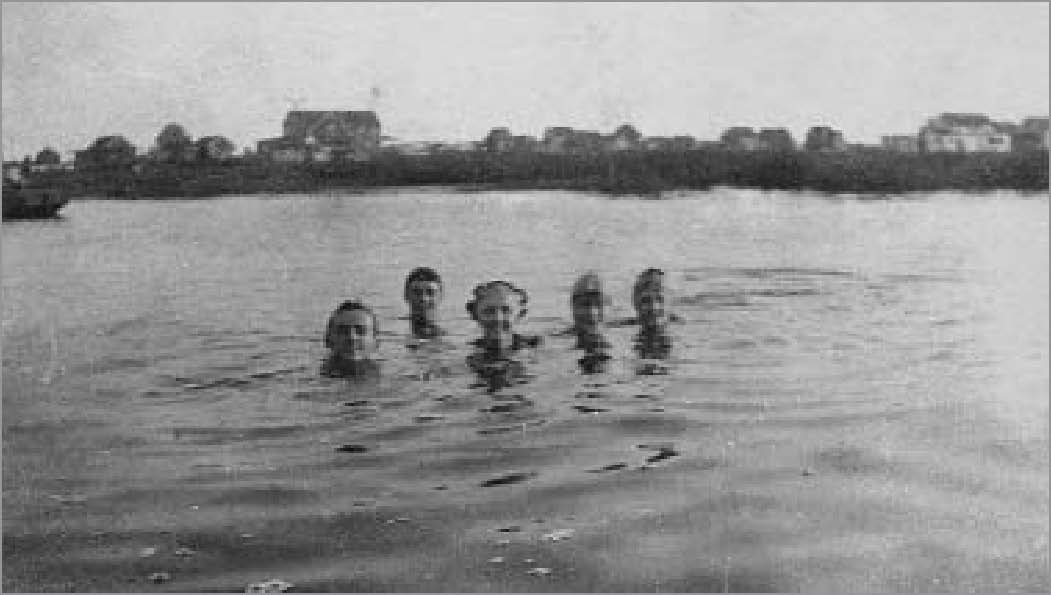
Awakenings
The early 1900s were exciting years for our family. Mother and Father were now living with their five children at 207 South Grand Avenue in Baldwin, New York. This place in Baldwin was a dream come true, with its acres of grounds, private pond and Parsonage Creek on its westerly border, which wound – and I mean wound – its way to Hempstead Bay.
As the family grew, with two other children arriving, boating became the Sunday adventure.Our first boat was a small sail boat,the “Stick In the Mud”,so named because it found and invariably lodged itself upon every mud flat on Hempstead Bay. Parsonage Creek (today 20 feet deep and docking large yachts along its length) was in those years a torturous winding stream, taking many hours to reach the bay.
On one of those adventures we sailed our little boat across the bay and I had my first glimpse of the lovely spit of land which would play such an important role in my life. About this time my Dad became interested in Point Lookout and soon he had bought the house (now 74 Glenwood Avenue) and leased the land on which it stood. Our beautiful romance with Point Lookout had begun.
| 11
In those days there was no way to reach Point Lookout except by private boat or by the ferry which came from Freeport to the town dock on Reynolds Channel.Since by this time we had a motor boar, the “Eileen”, and my Uncle Charles, who lived with us, could run the engine, this was no deterrent and Sunday after Sunday found the family, with the exception of Mother, who hated boats and waterways, happily on our way to Point Lookout and adventures unlimited.
My first recollection of Point Lookout is of a beach, big and wide and beautiful, with a series of high, wide sand dunes all along the waterfront, protecting it from the ravages of the sea.There were no roads or paving of any kind and very few buildings.In fact,facing the ocean there were just three houses, all of them still standing today. One is our beach house, at 74 Glenwood Avenue. Directly opposite stands the house now owned by the Korndoerfer family but at that time it was owned by the Burtis family. The third is on Hewlett Avenue, but was not occupied at that time.

These three houses faced the ocean and there were large sand dunes in front of each. You walked between the dunes to the ocean which at that time came up to where Beech Street is today. At the rear of the houses was the Town Pump and from there a narrow, sandy path wound its way through meadows to the Town Dock.There were several small cottages along this path, probably occupied by fishermen or life guards, but we never got to know them.
When my family first knew Point Lookout, there was a Coast Guard station to the rear and right of our house. I remember this very well as a breeches buoy was part of their life saving equipment and my brother Frank,who was seven years old and very light,was often the willing passenger when this was shot out in their life-saving practice, to the delight of his sisters and brothers, and especially our wonderful housekeeper, Edna May Carman.
12 |
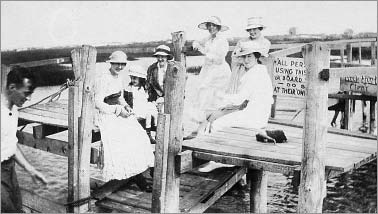
Ellison’s Hotel was further to the right and to the southwest there was a small community called Nassau-By-The-Sea, consisting of small bungalows built entirely on boardwalks and having a grocery store, a bakery, and an inn of sorts. I particularly remember the bakery because Mother or Edna would send my sister, Grace Eileen and me there to buy a delicious confection called a Sally Lunn.This was one errand we welcomed and we would walk west along the beach,past Ellison’s Hotel,up on the boardwalk and back home with the Sally Lunn, our mouths watering all the way.
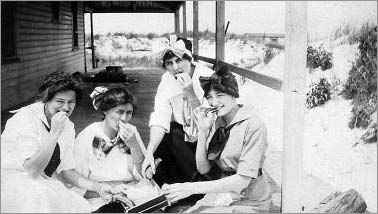
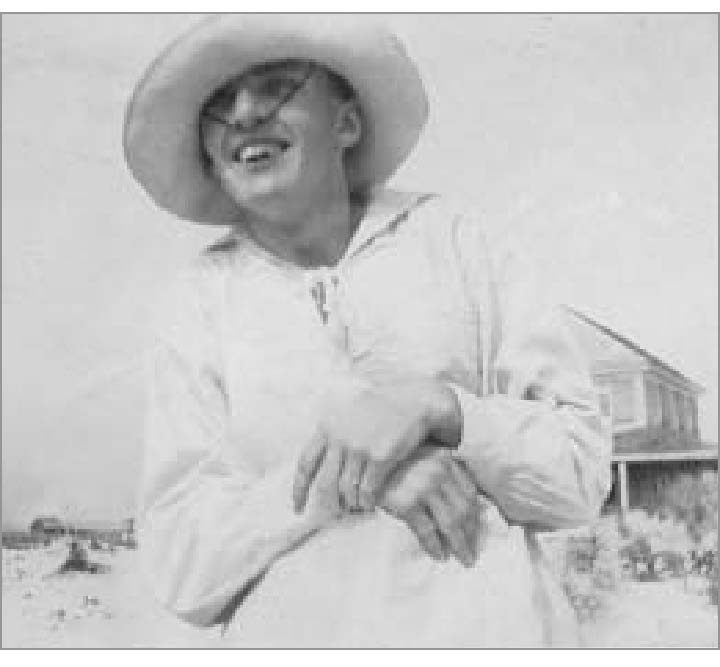
The Beach House, as it was always called in those early days before it was turned around to face the newly made street, was the greatest thing that had happened to the Hurley family since our discovery of country life in West Hempstead and Baldwin.The house itself has not changed much.The living room and kitchen are much the same now as then, but the upstairs is quite different.The front bedroom I am sure was there as we never knew where Mother and Dad slept, and also the hall bedroom which must have been Edna’s.The rest of that floor, as I recall, was open space, divided in the center by a curtain. Girls slept on one side and boys on the other.All I know of the “sleeptime” is that you were asleep as soon as your head hit the pillow with the sound of the sea in your ears.
Weekends were our special time for Dad,who joined us then, teaching us to swim, running races, building castles, exploring. I was not too good at swimming, being a bit on the timid side, but floating was another matter.As soon as I found out that if you put your head way down you could balance perfectly, that became my specialty and finally I was floating with a parasol over my head to prevent sunburn.
Sometimes on Sunday we would all go down to the dock, where our little sailboat,The Stick in the Mud, was anchored and have sailing races.The course was from the dock on the Point Lookout side to the dock at the Hempstead Bay Yacht Club across Reynolds Channel and back again.
Another great memory I have is of our moonlight swims in the ocean. Dad would go down with us, the beach white in the moonlight, the ocean dark blue with a silver path across it where the moon made its mark.This was a wonderful adventure – all mystery, danger and beauty, with shivers up your spine, but not fear because Dad was there and you knew you would be home safely with another great story to tell.
Since Mother was not fond of the beach, Edna often came along with the boat loaded with supplies. She was a good cook and liked to be the boss.At this time, the house next to ours was occupied by the Burtis family.Their children were younger than we were,and had the most interesting names – Esmerelda,Isabel,Ethelinda and the like. Their afternoon (p14)treat was usually pilot biscuits and so when Edna would make cookies and the delicious aroma would penetrate to the Burtis house, the five little girls would soon be dancing around our porch singing, “ I smell something goo-o-o-d, I smell something goo-o-o-d”.Edna would soon appear and say “Give us a song or recite a piece and you will have some as soon as they come out of the oven”. And they would. They had a grandma who came to see the Burtis girls every so often and when she was leaving to go down to the ferry dock, all the children would be out on their porch waving goodbye and singing,“Shake A Day Day” until she was quite out of sight.Once in a while, I remember, when food supplies were running low, Edna would have one or the other of us children posted in the attic window, where there was a good view of the bay, to see if supplies were on the way. Then we would all go down to the dock to help unload and get all the news of the mainland. Now, with so many birthdays behind me, I am reminded that I alone can tell the story of my family and that it should be told so that our grandchildren and those who follow them will know from whence they came. �
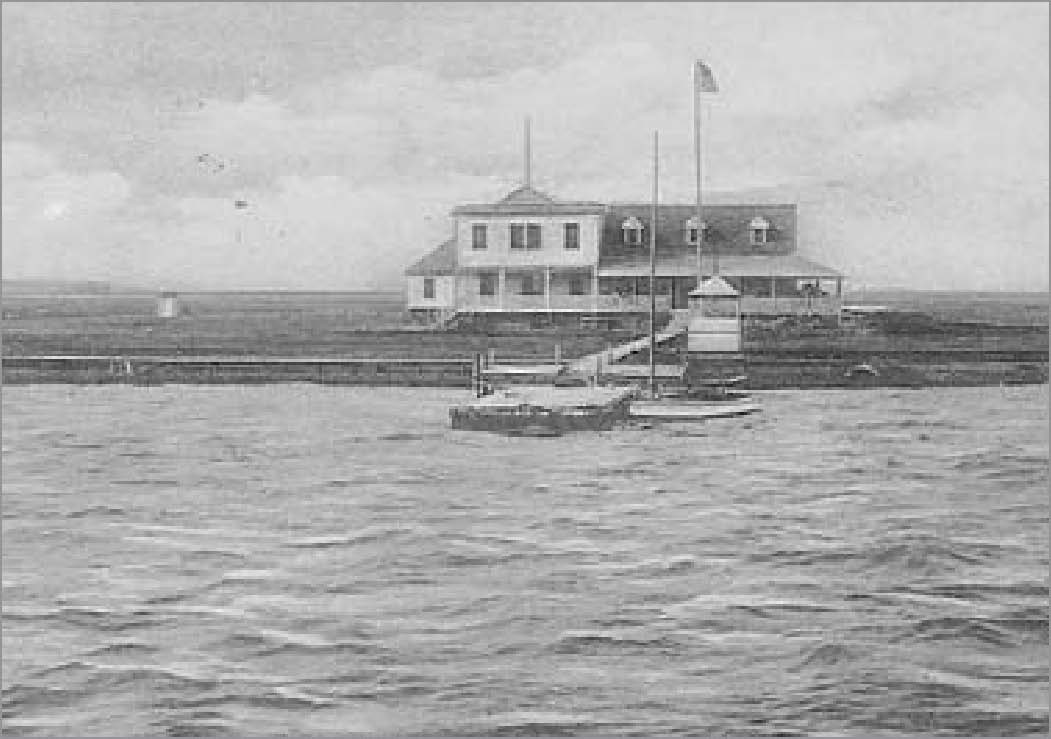
Hempstead Bay Yacht Club
Mildred Hurley McGinity
Printed with permission from her book, Awakenings
| 15
Nassau-By-The-Sea
Point Lookout in the early years consisted of a Coast Guard Station, Ellison’s Hotel and about 12 to 15 summer bungalows. It was used mostly by folks coming from the mainland just for a day at the beach which was mostly Saturdays, Sundays and holidays.
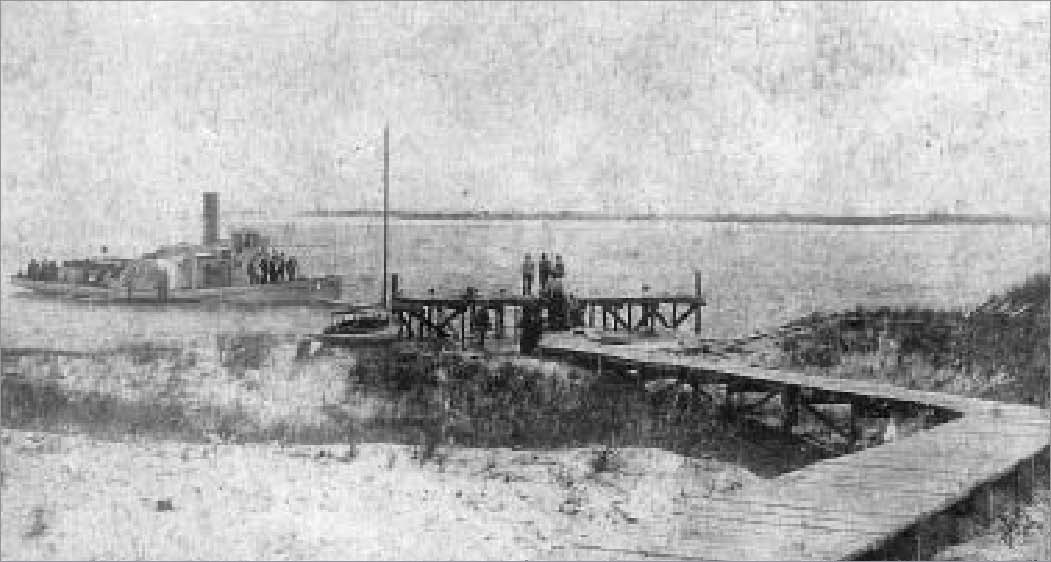
Some folks may enjoy reading of the early years of Nassau-By-The-Sea.This is relating to the the year 1907 and possibly a little before.At that time, the property could not be purchased – it could only be leased from year to year. There were about 200 bungalows stretched along the oceanfront and in front of the bungalows there were large paths where the folks walked to the ocean.A couple of times during the season when the moon was full and the tide high, the ocean rushed through at a few low spots and met with the bay – it sometimes flooded in back of the bungalows where the outhouses were located but it never caused any problem.This was really roughing it – but oh, what fun!
Transportation to this vacation spot was by ferry from Freeport, unless one had their own boat.There was a Post Office, General Store and Hotel.Tom Dier was the Post Master and also accommodated residents by selling, and delivering, ice, ice cream, soda, candy, post-cards and what have you. In 1927 most of the bungalows burned down with the exception of a few that were moved to Point Lookout or floated to Short Beach.
It was about 1925 when it was decided to start filling in the marsh land from Long Beach to Point Lookout. The sand was dredged from Reynolds Channel to prepare a base
16 |
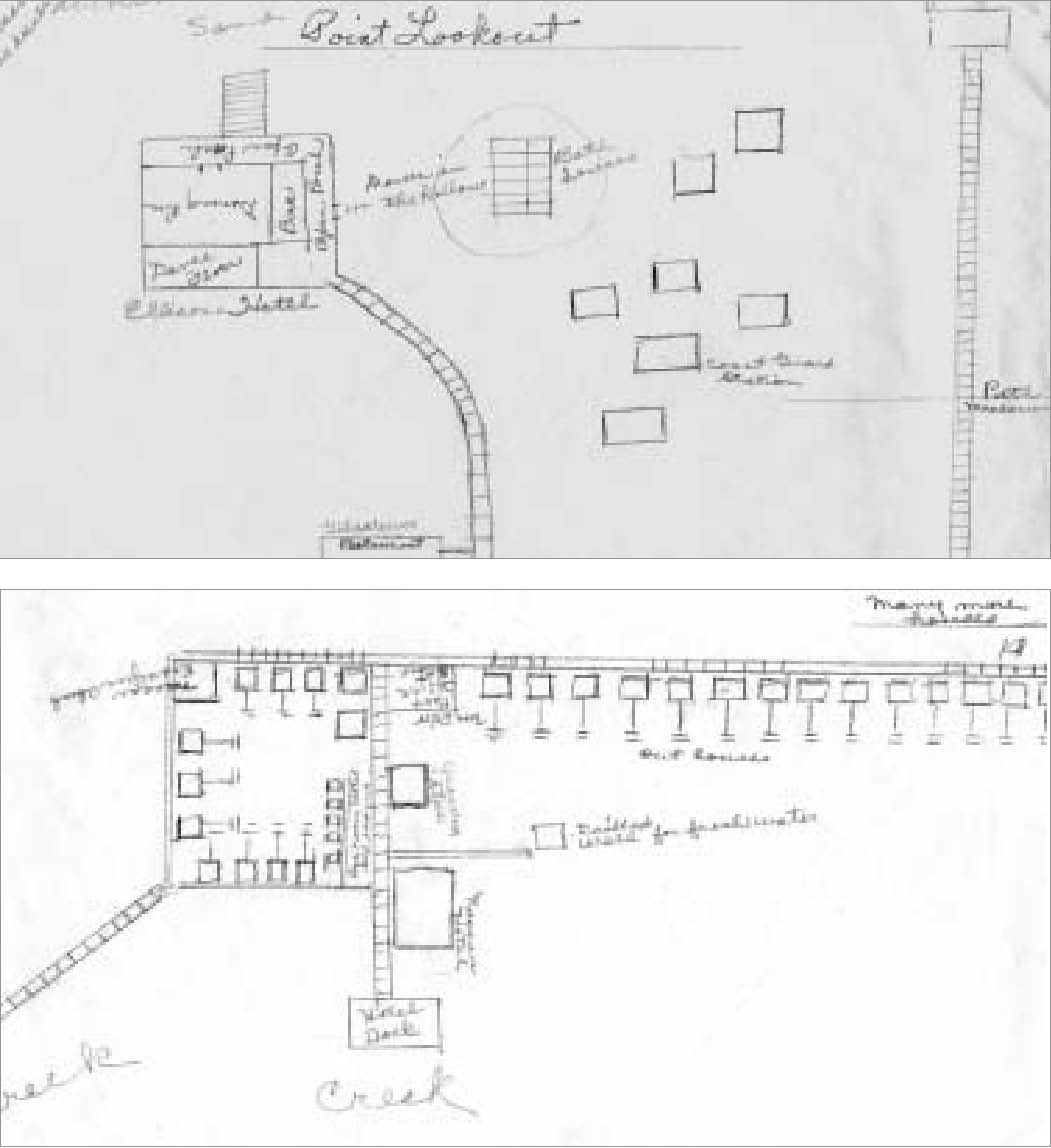
for a road.We recall many times in 1926 and 1927 travelling by car over the settled sand to get to the bungalows. In 1928, the Point Realty Corporation was formed and started to develop Point Lookout. We were one of the first to build at Bellmore Avenue; at that time there were no paved streets, only sidewalks and curbs.
A few years later the first apartment building with stores was built at the corner of Lido Boulevard and Parkside Drive, which still remains. From that time on, Point Lookout grew
Lou and Cathleen Sherman Cathleen Sherman’s map of Point Lookout and Nassau-By-The-Sea accompanies this article
| 17
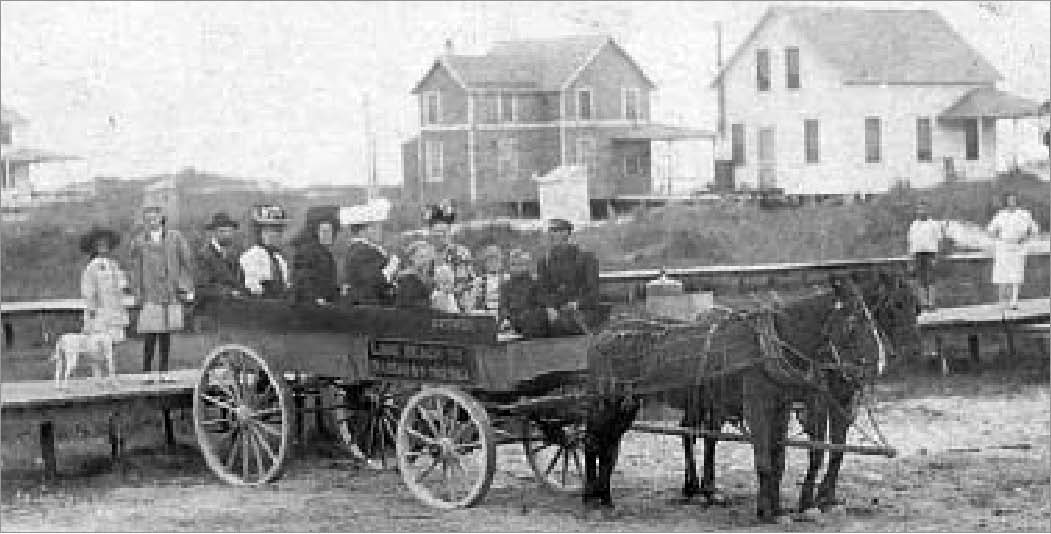
The Pig Who Ate Ice Cream
In the old days, the hotelkeepers used to get small pigs in the spring, fatten them up with the leavings from the tables all summer, and they had plenty of pork for the winter.
Mr.Guhl and Mr.Ellison usually had about ten each.One spring Mr.Ellison gave me a small white Cheshire sow. I made a nice pen and put the little pig in it. One of the men I had with me made a pet out of her, used to brush her off and grease her with Vaseline and she was very clean.
A young lady passed by and as she went to the ferry to go to business, and saw how nice the pig was, and came in the store and got an ice cream cone and which she gave to the pig. After that, every morning she went by, the pig would stick its head up on the fence and the lady always gave it a cone. Some days the lady did not go to business, then the pig would grunt and carry on until some one came out and gave her ice cream.
When fall came I sent the pig, a very big one then, to a farm in Roosevelt where she was used for breeding.We had named her Dorothy.
The lady who used to give her ice cream cones (we called them “toots” then) sold her house at Nassau-By-The-Sea, and we moved it to Meadow Island. She now has a fine brick house on Cedarhurst Avenue. �
Tom Dier Photo courtesy of Dr. Lowell Taubman
The Early Church
In 1911 there was a little church built on the old boardwalk on the bay-side. It was small but could seat fifty. Sometimes we had a minister and other times a priest. 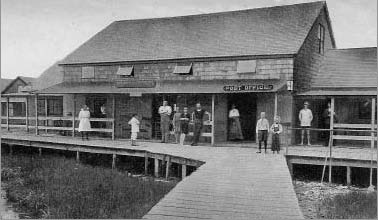
When neither were present we just sang hymns and said some prayers. A lady had an organ and when deliveries were made on Sunday, which were only for milk and the newspapers, we used to get the organ on the wagon and take it to the little church. On the way to the church there was a hotel and as in those days they were open all day Sunday, we used to stop and play the organ, sing a hymn and read a few verses from St. Matthew for the proprietor who could not get a way to go with us.
Later on,Long Beach built churches and the ferry company put on an early boat to take people there. There were only a few left who could not or would not go. We, the ones who were left, would take the organ to the hotel dining room and most always we found a clergyman to serve, but if not, we served ourselves.
When the West End settlement of Long Beach started, several of the cottages moved there and the little church went there also. The hotel burned down in 1918 together with several cottages, including the one the organ was in, and there was no church left for the ones who could not go on the ferry. The settlement was broken up in 1928 and after the (p19) new development was started and the fire house built, services were held there until the churches came. I have a Bible that was used in the little old church, and gave it to a man who enlisted when the war broke out. He went through the war and returned the Bible to me when he came back. He said it gave him courage when he was sick and wounded. No names are mentioned, but there are some who will remember.
� Tom Dier
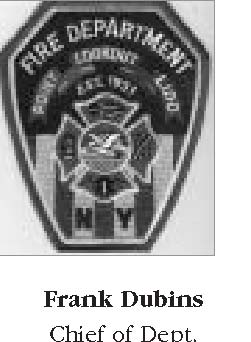
The Point Lookout-Lido Fire Department and the Point Lookout Civic Association

Two Great Organizations celebrating 75 yrs of service to our community!
Dave Russell Matt Thompson
1st Asst. Chief 2nd Asst. Chief
Don’t forget……Call 742-3300 for any Emergency!
S. Benjamin Murolo
Tel 516 316 2733 | Fax 516 739 2866 sbenm@optonline.net
JDI MORTGAGE CORP.
Residential and Commercial www.jdimortgage.com
Registered Mortgage Broker-NYS Banking Department
Funding arranged through third party providers
In Retrospect-Point Lookout in the 1930s
My recent articles have concentrated on the problems of the Point during the late 1920s and 1930s, and may have left some readers with the impression that the Point was not too happy a place during those years, but that is not at all the case. Our residents probably had no more money than people in other parts of the country because the Depression affected everyone, but we had a fine location, a clean environment, a good group of people, an active athletic and social life, and we enjoyed it all. Let me outline some reasons for my opinions.
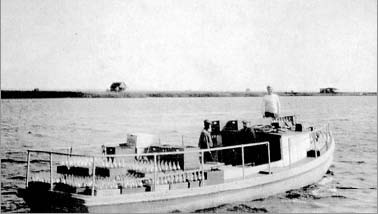
The real estate developer, Lookout Point, Inc., in its sales literature, made these comments – “the ideal seashore community”, “happy and healthful”, “a Haven for the Sportsman”, “a never ending source of delight to the swimmer and bather”, and “excellent boating and fishing”.They were truthful statements.
| 21
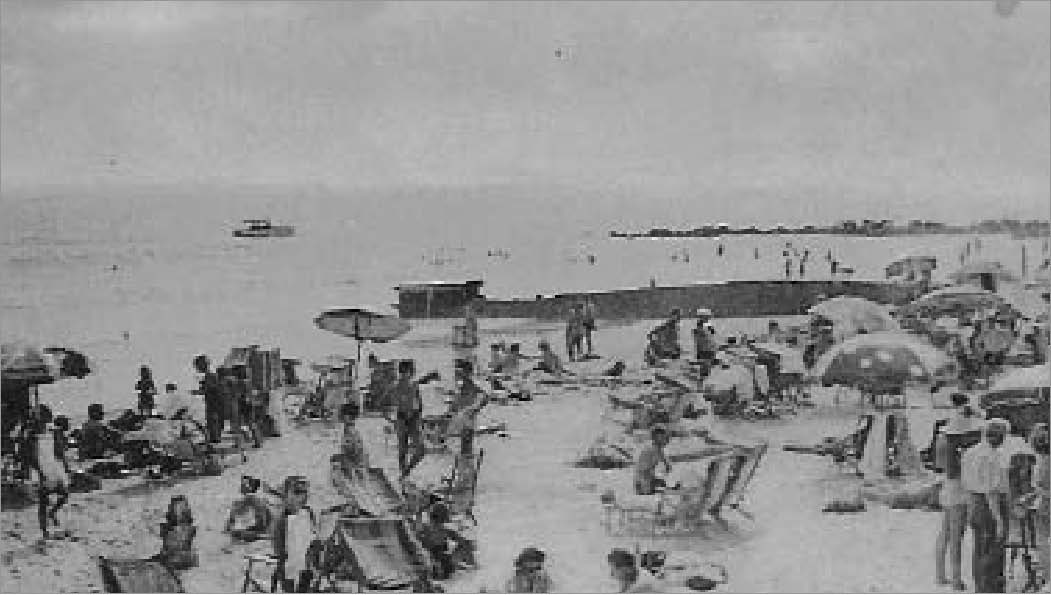
The ocean and beach were clean;many picnics were enjoyed on the beach by families, friends and neighbors; campfires were permitted and enjoyed; games were played and living was relaxed.
Fishing was a favorite pastime and it was superb. Flounders were plentiful in spring and fall and favorite spots were in Reynolds Channel and in the waters west and north of Alder Island (the land across Reynolds Channel from the Point). Fluke during the summer were very numerous in Reynolds Channel especially just west of the Point and in Sloop Channel east of Jones Inlet.Weakfish were available in Swift Creek.There was a deep hole in Reynolds Channel off of Middle Island on the way to Lido which was very good for sea bass and porgies, but they disappeared in the 1940s; some people thought this was because of the heavy pollution caused by the Navy Receiving Station at Lido during World War II. One of the favorite fishing spots that my brother, Elmer, and I had was near buoys 18 and 19 – then located in the inlet on the Short Beach side, where we fished for kingfish on an outgoing tide.We were strong advocates of chumming because it attracted fish and kept them around.We would catch twenty kings between us in one and a half to two hours using our own homemade chumpot – a burlap bag weighted with a couple of good sized rocks or bricks. Several small holes were cut in the bag so the chum would gradually drift out,and the bag contained a full bucket of mossbunker.The action from the kings was great.Eels were plentiful and in the fall the bay waters were alive with snappers.Little neck and cherry stone clams between Alder Island and Middle Island were delicious and a bucketful could be raked within forty-five minutes.
On the social side, there were a number of social clubs and groups during those years – The Catholic Club, the Square Club, the Lookout Social Club, the Ladies’ Guild and Men’s Club of the Community Church and others. Of course, the Civic Association, the Fire Department and the Republican Club were very active in promoting the welfare of the Point and its social life. The Catholic Club, for example, was founded in June 1934 with Michael McPhillips as its first President.These groups organized bazaars, dances, plays, dinners, card parties, parades and athletic meets. On August 12, 1933 a group calling itself Ye Ladies of Point Lookout presented a play,“Ye Olde Famile Album”, for the benefit of the Fire Department building fund.This took place in Gus Gebert’s Tavern (editors note: now The Fisherman’s Catch) and had a cast of 36. In July 1935 the Fire Department had a new feature in connection with its annual bazaar and dance – a bathing beauty contest to determine who would win the title of “Miss Point Lookout”.The last social event of the 1935 season was also held by the Fire Department. It was a barn dance at the old Fire Hall. The Hall was well decorated with hay, harnesses and corn stalks, and corn-cob pipes were given out to everyone. Many came in overalls, old clothes and the like; a hillbilly band entertained.The items included a live duck and a sack of potatoes.The price of admission – 50 cents each. These were Depression days, but people at the Point had fun and life was less complicated.
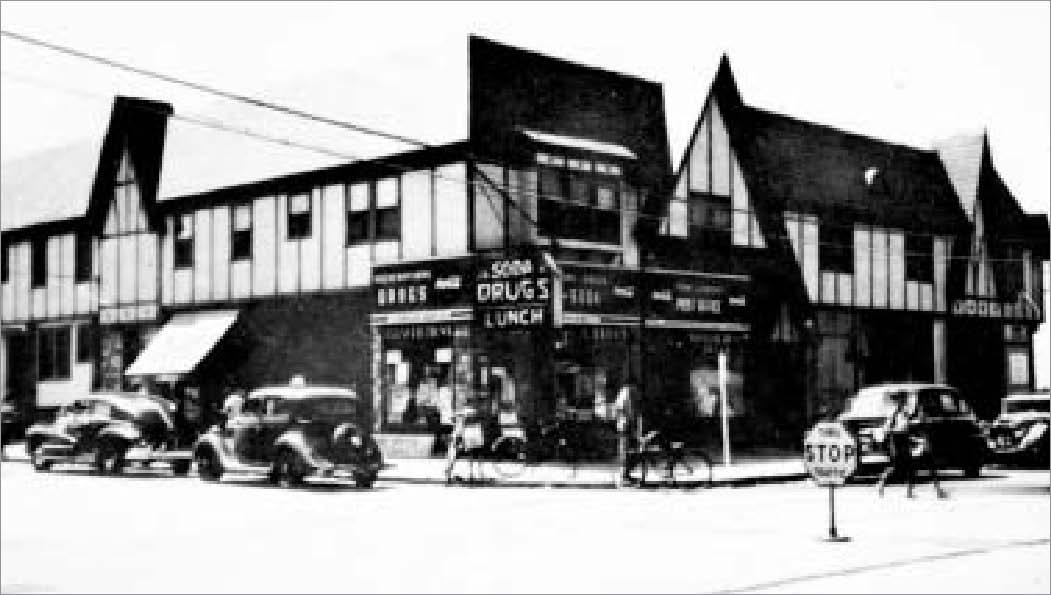
Of course,there were also the more commercial forms of entertainment available,such as restaurants, bars and soda fountains. Gus Gebert’s Tavern on the bay added bowling alleys, but they later became part of the dining room. Most of those establishments changed ownership periodically and introduced innovation in their operations, but they all catered to their customers and added to their customers’ pleasure. I remember that Whitey’ s Oasis (editor’s note: later to become Chicolino’s – a story in itself – and which even later was to be torn down and developed, sadly, into housing) had open air evening movies for several years, which gave our kids much enjoyment.
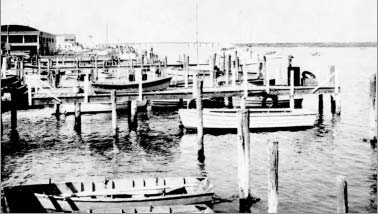
I shouldn’t fail to mention that the Civic Association sponsored a horseshoe tournament in 1934 and The Lookout, our newspaper of those years, reported the results of the first round of competition. I was eliminated in that round of the singles tournament, but I went on to win the Class A doubles title with George Deyell as partner. Each of us received a fishing pole. In those days we had a fine regulation clay court through the courtesy of William
H. Schneider of Freeport Avenue, then Superintendent of Public Works of the Village of Freeport, who later became my father-in-law. His daughter Audrey was the girl next door. �
Mel Brown May 24, 1978

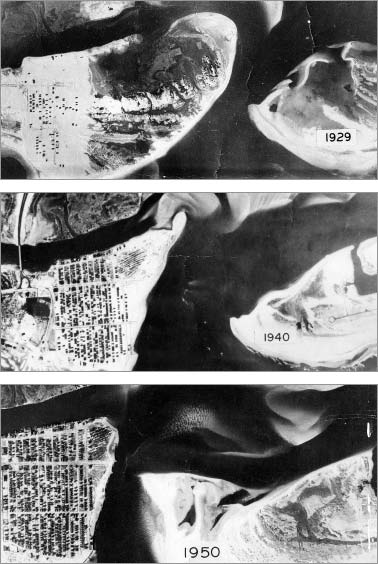
The Lost Point Lookout And The Great Rock Sea Wall
As everyone knows, Point Lookout is located on the eastern tip of a barrier beach island, surrounded by Reynolds Channel on the North, Jones Inlet on the east, the Atlantic Ocean on the south and East Rockaway (Debs) Inlet on the west.
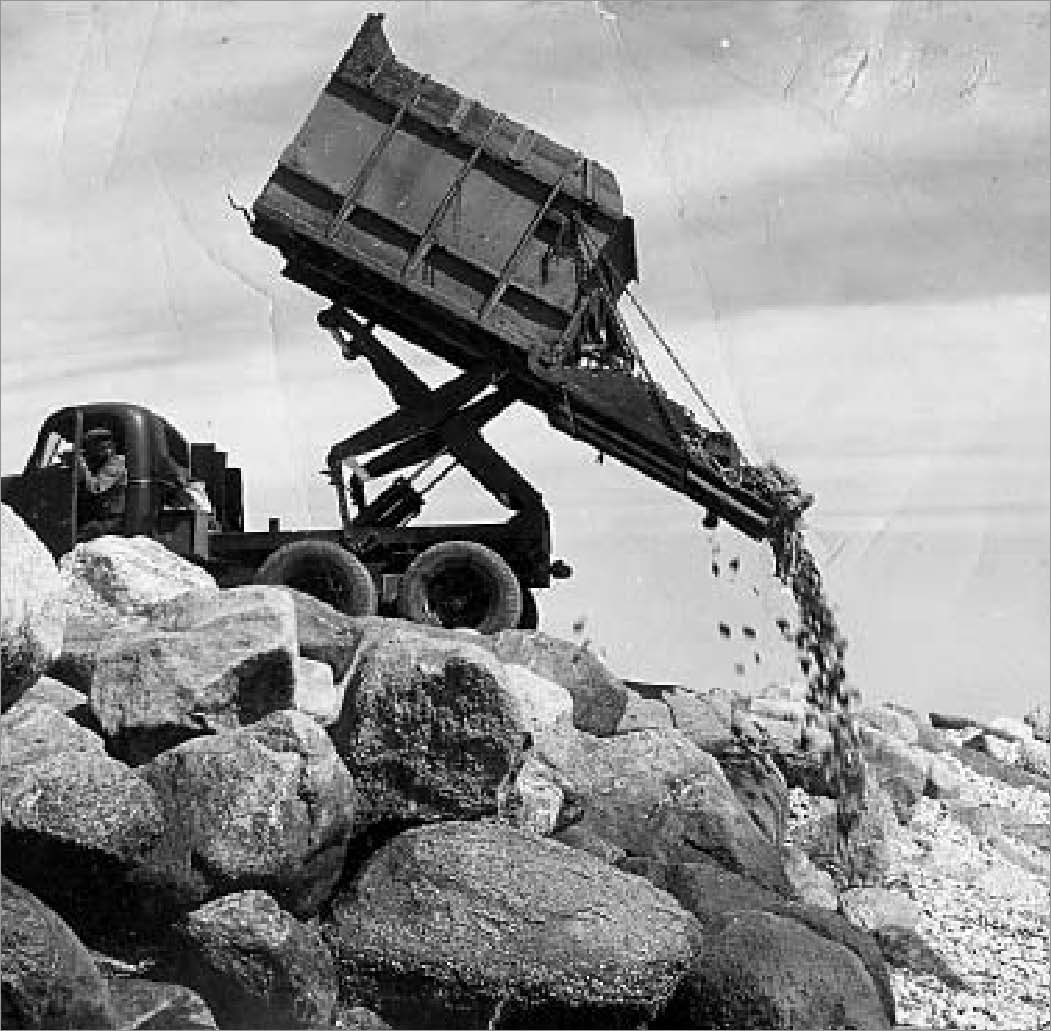

Also well known is the fact that the littoral drift of water-borne sand is from east to west. What is not so well known is that the sand in question must come from somewhere.There are benefit areas of our barrier beach and donor areas.Also not widely understood is that not only does sand travel in a westerly direction, but unless stabilized, the inlets migrate west as well, the eastern side of the inlet growing longer and the western side growing shorter.
In my photo gallery is a 1929 aerial shot of Point Lookout which shows an area roughly two and a half times the size of the present day Point extending to the east.When I was a boy in the late ‘30’s, this eastern end of Point Lookout was being washed away at an alarming rate. It was so bad that the southern most house on the east side of Mineola Avenue was moved to Parkside Drive. Interestingly, the western most part of town. This house was owned for a time by the family of Dr. Hughes. A picture of mine of this house on the inlet (see pg. 38) shows a timber bulkhead in front of the house buttressed by sand bags. Sand was lost to the sea either through cracks in the timber staving or slid under the bulkhead. If enough sand was lost the anchors, or “deadmen” as they are called, would give way, causing the bulkhead to fall into the sea, dooming the house.
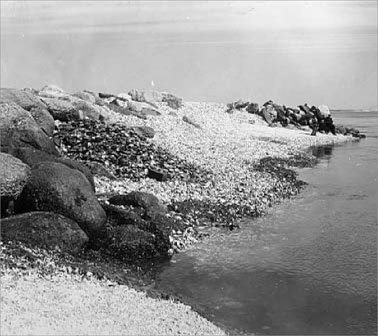
Due to the absence of a stone jetty extending seaward on the Jones Beach side of the inlet, Point Lookout was exposed to Northeasters and high intensity waves would come surging up the inlet onto this eastern shore.I have in my possession an 8 millimeter movie film taken by my father in 1940 showing the ferocity of seas pummeling that shoreline and the catastrophic erosion that took place.Around 1940,the Town Of Hempstead began construction of a Great Rock Sea Wall extending from a spot just north of Lido Boulevard to the southeasterly end of Mineola Avenue. The problem was that as the sand eroded under the rock wall, the wall would become undermined and fall into the inlet. On many occasions, after an easterly gale, rock slides would occur. More rock would have to be brought in to fill the breach.This went on for a few years as there was still no jetty on the Jones Beach side and the eastern side of Point Lookout was fully exposed to the ravaging sea just as if it were on the ocean front. In my opinion, had not the eastern shore of Point Lookout been stabilized, the place we know as Point Lookout would now be on the Jones Beach side, due to the westward migration of the inlet.
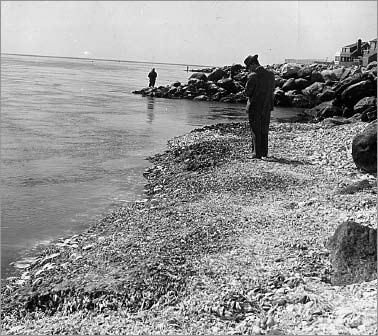
In 1944, my father had the opportunity to become a supplier of shucked surf clams to Snow Canning Co. of Pine Point, Maine. This was a new fishery with a market demand fueled by wartime food shortages.We had five company boats and a number of independent boats dredging clams for us. Some days we would shuck sixteen hundred bushels, all by hand.By this time,the seawall was on a precipice,sections falling during storms necessitating high maintenance to the wall.The clam shells for which there was no market provided the solution.With the cooperation of the Town of Hempstead and New York State Department of Public Works, shells were dumped on the seaside of the seawall creating a sloping reef. Subjected to wave action the shells would leaf or overlap like interlocking fingers to form a solid reef, protecting the wall from being undermined. Not only did they form a protective reef in front of the wall, but because of their porous nature, absorbed the shock of crashing waves like a sponge. I have a newspaper clipping from the Nassau Daily Review Star circa 1948, reporting a depth of water survey in front of the wall. To quote from the article: “Soundings taken directly in front of the seawall varied from shallow to 45 feet.Town officials were highly complimentary to Mayor-Elect Robert L. Doxsee of Freeport, saying his cooperation in placing clam shells in front of the seawall had prevented considerable erosion.”
The long-promised one mile long jetty extending seaward into the Atlantic Ocean from Jones Beach was finally completed in 1953, providing protection to the eastern side of Point Lookout from horrendous storm damage. Over the years the rock wall has been maintained. Thanks to Tom Doheny and the Town of Hempstead Department of Conservation and Waterways we were able to obtain large amounts of very valuable stone and concrete material at almost no cost to further strengthen the rock wall. In the beginning, however, it was the Great Rock Sea Wall and the lowly clam shell that held back the mighty Atlantic. �
Bob Doxsee
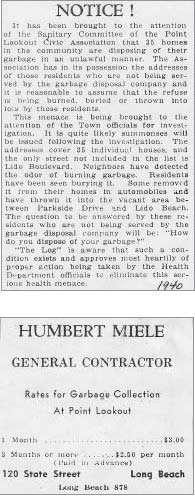
An Obituary On Old Pete Makes Past Live Again
Point Lookout’s Piccolo Pete made the pages of the local newspapers a couple of weeks ago. Too bad he had to die to do it.
In my hurry to grow up,I never paid much attention to Piccolo Pete – just a bit of local color, a pleasant vagrant never without his bicycle and bedroll. But the story in the paper told me Belgium-born Pete Tahon, who died at 82, was a Merchant Marine sailor who had traveled the world before deciding, in the thirties, to spend the rest of his life migrating between Florida and Point Lookout.
I can see how he found Florida, but Point Lookout?
Recalling Smelly Sam
When I read of the old man’s death, I got to thinking about some of the other people who were part of the backdrop of my own growing up.
For example, take Smelly Sam.That’s what we called him – the man with the horses, the only ones in town.
I can’t remember what he looked like, or even his last name, but I do remember that, in the days when Point Lookout had a point – an enormous wild area of rolling dunes that were great for cowboy and Indian forays and for skinny dippin’ – Sam had a stable out there. He and his horses and wagon were in charge of keeping the streets clean.They were also the ones, who, once they substituted the wagon for a scoop, dug the foundations for all the new homes going up in town.Many folks today are living atop Smelly Sam creations.
And what do I really know about Tom Dier? I knew he was the postmaster when I first arrived, when the post office was on the corner of Lido Boulevard and Freeport Avenue and when Jack and Beanie Hoolihan ran the newsstand there.
I had heard that Tom was a Spanish-American War veteran, and I knew that, no matter how shattered his eyeglasses were or how tipsy he was, he always put the proper letter in the proper mailbox.And none of us can forget his dog,Red.
Faithful? Wherever Tom staggered, there was Red.
Wore a Skippers Cap
And what about Captain John? I know even less about him. His name just brings up a memory of a tall, dignified, gray-haired man who always wore a blue skippers cap. I can only remember him along Bayside Drive.
The weather, as I recall, was his only thing, and all of the young guys were always asking him kiddingly,“How does it look for tomorrow, Captain John?” He was never at a loss for a detailed report.
But for all of us now in our forties and over, and who were kids at the Point, the all-time favorite was Louis – Lou-ee,not Lou-us.He was a great aerial photographer,and his work can still be seen on the walls of some of our public places.But that’s not what made him our favorite.
Louis owned The Oasis, a soda fountain that Whitey and his wife ran. And just outside, Louis had his free movies. The screen was there, and so were the bleacher seats and benches, but I don’t remember how many nights a week Louis showed his films. I do recall that on those nights Joan and I – along with Bob, Howie, and little Margie Meny and Joe and Jimmy Slavin, all with our 5-cents spending money – would have our spots staked out in the grandstand. I still have pictures to prove it.
An Evening With Lon
Those were the days of the silents, and that’s where we saw “The Phantom of the Opera” and “The Hunchback of Notre Dame” and they all scared the devil out of us. I can still remember those shrieks of ours.
Louis also experimented with talkies and, as I recall, the words spoken never synchronized with the movement of the mouths. Nobody cared.That just made it better.
On special occasion, Louis, with a magician friend, put on stage shows to go with the movies. I can’t remember having a better time at Radio City, even though that’s where I saw “King Kong.”
Louis, with his tanned and shiny bald pate, was, at least in our eyes, a sleight-of-hand man without peer. He could do things with a deck of cards that left us open-mouthed. I don’t know if Louis is with us anymore. I don’t recall seeing him in town since before World War II. But, I’ll tell you this: That man has left behind a legacy of love and remembrance at the Point that any philanthropist would envy.The excitement we had looking forward to a night at Louis’ free movies has seldom been topped for any of us. �
Philip H. Dougherty, New York Times - July 30, 1972 Reprinted with the kind permission of the Dougherty family
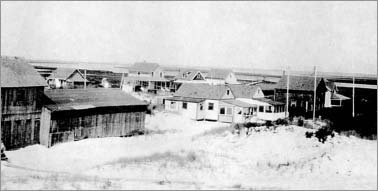
Point Lookout in the Early Years: One Man’s Recollections
My father started a business in Point Lookout in 1929, and he moved the family here year round in 1932. We had come from Oceanside. It was the Depression, and he had a plumbing business there but lost everything and so he came to start again in Point Lookout. There was very little work and it was pretty tough going. It was difficult in the first few years; my sister Mary and I went to stay with relatives on and off until things began to pick up in 1935.
At that time, although Point Lookout was a busy summer community, come September nearly everyone left.The summer residents left, the stores closed, the bars closed.There were about 45 families here year round.There was nothing to do. Nothing. Once a week we would go to Louie’s in Island Park, or, after the Loop Parkway opened in 1935, to King Kullen on Merrick Road in Freeport to pick up provisions.I was one of just a few children from Point Lookout going to school each day – the others being Andy Chisholm, George and Bob Bower,Edith Scully,Alice Hagestrom,George Schreiber,and my sister – taking the public bus to Long Beach.In those days there was one bus that left to meet the commuter train in the morning and one in the evening that met it coming back. If you missed the bus, you’d hitchhike or walk. In good weather we’d walk the beach.We’d go to the Laurel Theater for the movies,and while it was easy to get a ride west,there were usually no cars coming home. In winter, to stay warm, we’d “run a pole, and walk a pole” and the time would pass quickly and we’d be home. In those days, Lido Boulevard was two concrete tracks, with sand in the middle. Between Point Lookout and Long Beach there was very little – just big sand dunes. Later, the beach clubs came in, the dunes disappeared and the county tarred over the road.
We moved to 18 Hewlett Avenue then, which at that time was the last street in town. The rent was $25 per month, year round. It had steam heat and was fitted for the cold winters. The house is still there, but at that time there was no real back yard, the sand behind us just merged into the dunes that stretched toward the inlet.There was no vegetation really – no trees, no flowers, no gardens – just sedge grass and sand. The Public Works Administration had come in somewhere around 1929/1930 and lay the storm sewers and the streets were laid. The area east of Hewlett Avenue went on and on; I think it was twice the size of the town. My friends and I laid out the first baseball field in town in those dunes, and I drilled a well and rigged a pump so that we could water down the infield. Lou Pearsall, who owned the fishing station that is now Ted’s, had the contract to clean the streets, and he kept his horses out in stables in the dunes. Sam, who was in charge of the horses, would let us kids ride the horses bareback. My father later bought and built 52 Lido Boulevard and we moved there.
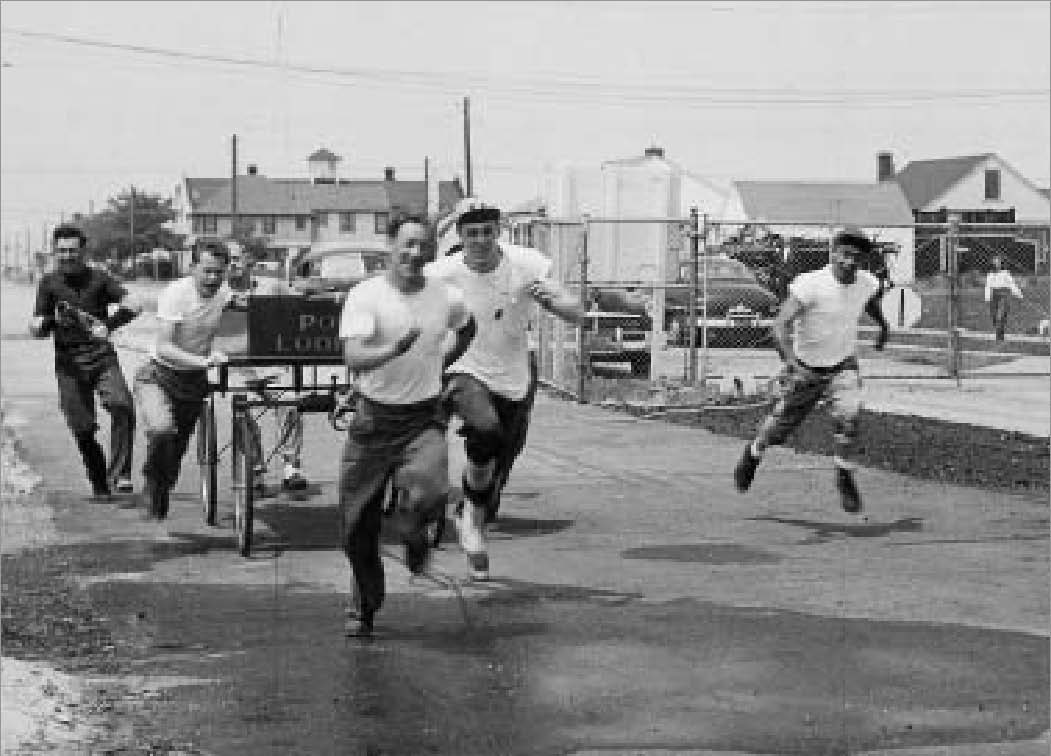
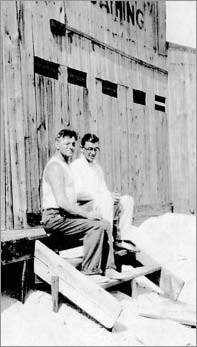
In 1935 the Loop Parkway opened and, as Point Lookout was the end of the line,the State Troopers would come down for their break, and we got to know them.They had these great cars – big Ford Phaetons, with running boards and hood ornaments. Sometimes we would go to Freeport, to see friends there.The State Troopers would drop us off on Merrick Road and, after telling them that we were coming home at 10:30, we’d walk down to the High School.They would tell the next shift and later, just like clockwork, they’d pick us up as we walked home on the side of the Parkway.
In the early days there were a lot of builders in town: Leonard Little, Artie Luntz, Ralph Vail, Bill Helmer.Ralph Vail’s office was next to the fire hall; Len Little’s office is where the beach shack is now. Len had a sign that said,“A Little House for Little Money”.It was little money – you could buy a new house for $2,990, and could buy an empty lot for $500! For $240 we rigged a house with a full plumbing system.You couldn’t get a faucet changed for that amount today.
All the summer bungalows were built with fireplaces, even though they were closed in the winter.You would go down to the beach and pick up driftwood and burn it in your fireplace in late spring and early fall.The winters were much colder. Reynolds Channel used to freeze over solid. We used to ice skate on it as children during the winter. Somewhere I have a photo of Artie Luntz, who also used to have a fishing station on Baldwin Avenue and Bayside Drive, out on the ice with a few friends, some beach chairs and umbrella and a big fire blazing.All out on Reynolds Channel. Down by the ocean, Len Little would set up a rink near his office – where the entrance to Civic Beach is today – and we’d have a great time ice skating there as well.
In those days most activities,especially in the winter,were centered around the old fire hall, which was built soon after the fire department was started, in about 1931. Originally the department had built a small garage on Bayside Drive between Garden City and Glenwood Avenues, and that was later moved to the corner of Hewlett Avenue and Lido Boulevard and a community hall built next to it. Bill Helmer was the builder and George DeSalas was the engineer.DeSalas was one of the engineers for the building of the Empire State Building.
In order to pay for the cost of building the community hall, the board of fire commissioners floated bonds which were later paid off with barn dances and the like. Both churches – the Catholic Church and the Community Church – held services there until they built or moved into their own premises.The hall was open to the rafters and there was a stained glass window above the door, on the second story. About once a month there was a party or pot luck supper – all the wives would bring a dish, and a country band would come down and play.Whoever was the chairman for the night would add up the expenses, count the heads in the room and divide the costs.
I remember playing basketball as a boy,and you had to shoot over the beams sometimes in order to get a shot in. Even still, we’d have teams from Brooklyn or Long Beach down to play against.There was no heat in that hall; you’d have to do a lot of calisthenics to warm up.The rafters were later sealed up and the ceiling dropped inside. Because the hall was unheated, the Fire Department built the East Room, with that beautiful stone fireplace.
Our first Chief, who served off and on for about fifteen years, was Joseph Scully. Mr. Scully was an interesting man. He was the traffic manager for John Zemanville, and through him was able to buy a stage, which he somehow brought out to Point Lookout and installed in the Fire Hall. For a number of years we had summer stock theater, with all the great Broadway plays. Many of the actors would stay over and spend Sundays at the beach and enjoy themselves.
Point Lookout during the summer in the 1930s was a magical time.There was no television, of course, so at night everyone was outside.You couldn’t drive down the street, as there were groups six or eight abreast walking.There were parties all over town which people just dropped into and everyone ended up in the bars. In those days the bars were like pubs in Ireland, where you’d find all ages – parents, children, pets. Louis brought us the outdoor movies, which were set up behind the Oasis, and there were bleachers and children of all ages watching them.
There were really two groups in town then: those who lived closer to the ocean, and those closer to the Bay.Bay rats,they’d call us.While we’d go the beach occasionally,we did most of our swimming in the bay. Swimming, jumping off of docks, off of bridges, fishing.
I had worked with my father since I was young – 12 or 13 – and in 1939 I became partners with him. We first rented the building where our office is now. It had been a real estate office until then.We were able to buy the building, and the land underneath it, and then the land to the west and the east of it for parking.In those days it was one hour parking and it was enforced. I later gave the two lots on Freeport and Lido to the Community Church because they wanted a presence on Lido Boulevard.
The hurricane in 1938 was not too rough on Point Lookout. Perhaps this is because of how Point Lookout itself is laid out, with Ocean Boulevard 2 feet higher than Lido Boulevard,as well as the fact that we have miles of wetlands behind us.Other than a chimney falling down at the Briley house on Baldwin Avenue and Ocean Boulevard, there wasn’t too much damage caused by that storm. I remember sitting in the old American LaFrance fire engine with Jimmy McPhee, in front of the Middlemark’s house (the Malitz home today).The beach was gone and the waves were lapping up against the wooden bulkhead, and there was two inches of water under the truck running toward the bay, where it flowed right in and kept going. Freeport and Island Park were much worse off.
Storm seasons always caused a lot of erosion even then, especially on the inlet.The last house on the east side of Mineola Avenue towards the Ocean was owned at that time by a Dr. Hughes.The sand kept pulling away until the cesspool gave in, and the waves were lapping at the foundation.We called Dr. Hughes’ office in Manhattan to give him the news and they said he was traveling in Europe. He finally sent word back.“Save the house.Take any steps necessary.” We arranged for a truck full of sandbags to shore it up, and then hired another truck to bring the house across town, to where it sits today at 125 Parkside Drive. Erosion also eventually got to the row of houses on the south side of Ocean Boulevard.They were really just beach shacks, right on the sand, without a foundation.We always called them the Railroad Houses. Marlene Dietrich rented there one summer.They were swept away during one storm season.The Scolaro house also began on the south side of Ocean Boulevard before it moved to its current location at 105 Parkside Drive.
On Sunday, December 7, 1941 I was sitting in a movie theater in Hempstead when suddenly the film was interrupted by a Pathé news reel. President Roosevelt announced that Pearl Harbor had been attacked.The next morning at 9 a.m. I was standing in line at 93 Whitehall Street, enlisting in the Air Force. I ended up in the China–Burma–India theater as a crew chief on C-47s. I met Pat, my wife, after the war; she worked with my cousin in the city.We started going together,and then became engaged.She was a real city girl.She’d come down and say,“You don’t expect me to live in Point Lookout, do you?” We kept on, bought a place,and after a bit you couldn’t get her away,she loved it so much.We raised all our children here.There’s not a place in the world like this town. �
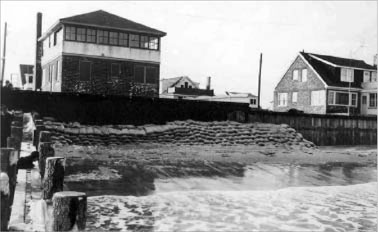
John D. MacDonald

LEO F. MCGINITY, JR.
Attorney At Law
McGinity & McGinity, P.C.
Garden City Center
100 Quentin Roosevelt Boulevard
Garden City, New York 11530
Tel: (516) 227-6000 | Fax: (516) 227-6004
The Lookout
The earliest newspaper that we had at the Point was The Lookout. It was started either late 1933 or early 1934 because Volume 1 No. 5 was dated July 28, 1934.
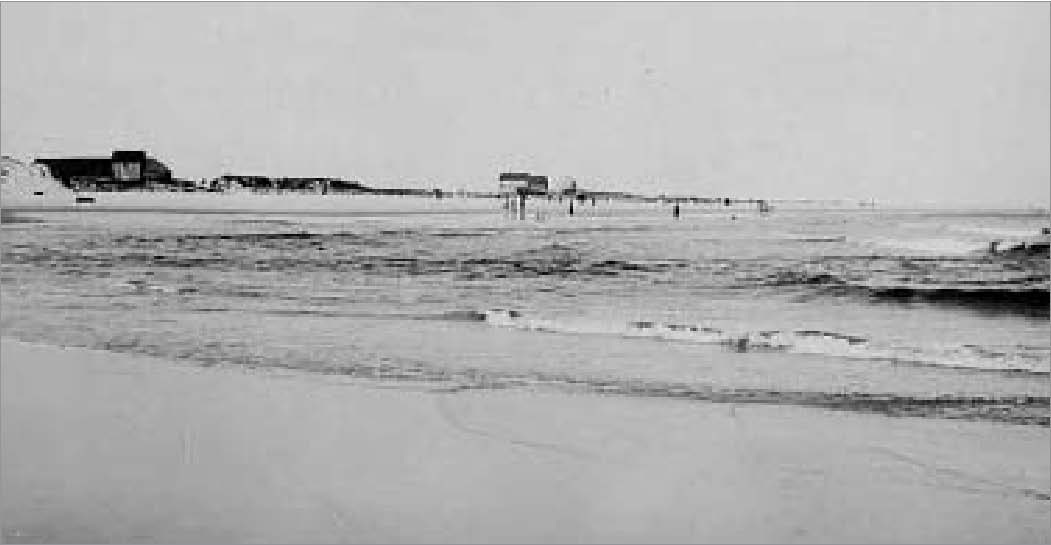
The Lookout was published weekly during the summer and sold for three cents a copy. Dorothy and Irene Murphy were the co-editors and E.J. Sweeney was sales manager. Some of the early advertisers were Ralph Vail, Bright Eye Fish Co., Leonard Little, M.J. O’Rourke & Sons, Philip P. Engeldrum, the Laurel Theatre, and Whitey ‘s Oasis. The issue of The Lookout of August 26, 1934 mentioned the forthcoming marriage of Audrey Schneider of 111 Freeport Avenue (and also included her picture) to the Chairman of this Historical Committee.That event occurred September 7, 1934. In 1935 E.J. Sweeney was no longer associated with the publication. Helen Murphy and Henry P. McCabe replaced him. Just when The Lookout was discontinued is not presently known but another publication was commenced in 1938 entitled The Log.It was also published weekly during the summer.The editor was Edith Marion Scully and other members of the staff were John Scully, John Croteau, John Guerin, and Peggy Scully. Carolyn Gates reported from Lido.The Log sold for ten cents a copy or $1.00 for the season.We know that The Log was published through the summer of 1940 but we don’t know when it was eventually discontinued. The present Community Outlook was commenced in 1948 and has ten issues annually. �
The Historical Committee of the Civic Association, 1978
Point Lookout Civic Association Celebrates 75 Years

The Point Lookout Civic Association was founded in May, 1931 at the Brooklyn Elks’ Club by ten interested citizens. Joseph Garahan was the first President; Michael McPhillips, who at that time was the Assistant District Attorney of Queens County, donated his legal work “gratis”. According to historian Mel Brown, in a 1978 Community Outlook article, numerous issues challenged that early Civic Association.
They were, “disposition of the garbage, unpaved streets, inadequate fire protection, undesirable parking of cars after the streets were paved in 1931. On some solutions to problems there were objections. Some residents didn’t want paved streets because their children would be endangered by traffic; others didn’t want to pay for garbage collection, especially if they were only summer residents; some wanted to be able to park on the streets but deny the right to outsiders, etc.”
According to an article in the original Lookout, dated August 19, 1934, Phil McCaffrey wrote,“Two years ago, parkers left their cars in front of our doors and garage paths while they littered our beach with garbage,paper,broken bottles,etc.With the cooperation of the Town Board and the Nassau County Police, the Association has succeeded in putting a stop to this evil.”
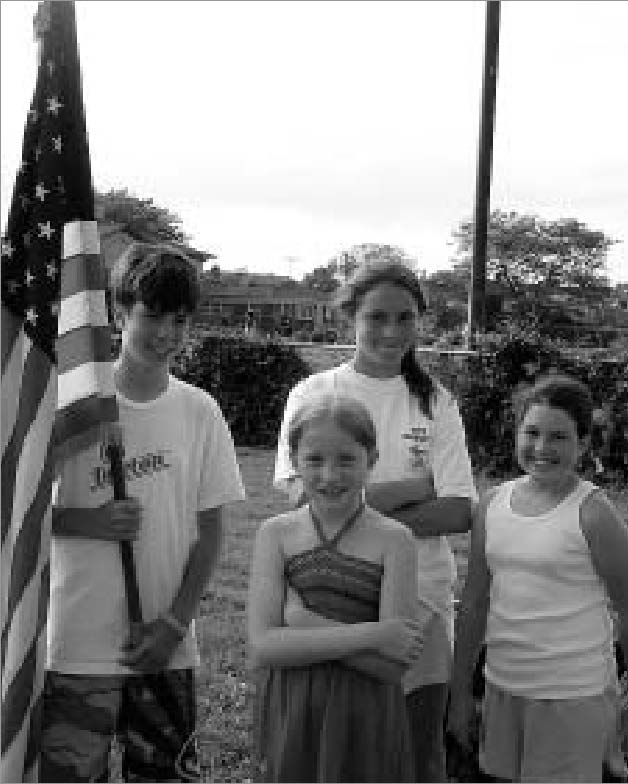
The Civic Association began to move things along. They helped raise the funds for the first PLFD fire truck, they organized the first Fourth of July parade and Children’s Day races, and began to work with the Town of Hempstead to bring services to Point Lookout.
The PLCA was directly responsible for the creation of our beach park district, the first in New York State, and has worked since that time to ensure that our community enjoys that beach all year, and that the local, state and federal governments are aware of our needs as relates to upkeep and erosion.
The PLCA worked to have the baseball fields established. They petitioned successfully to have the speed limit dropped to 15 miles per hour when two children were killed by speeding cars on our streets.
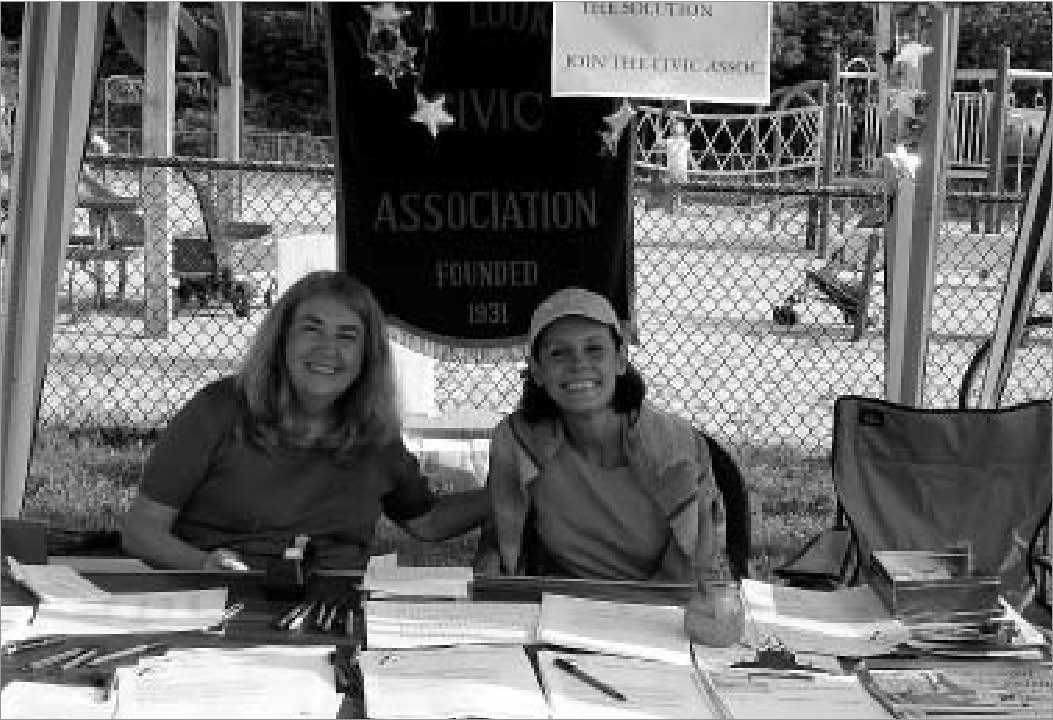
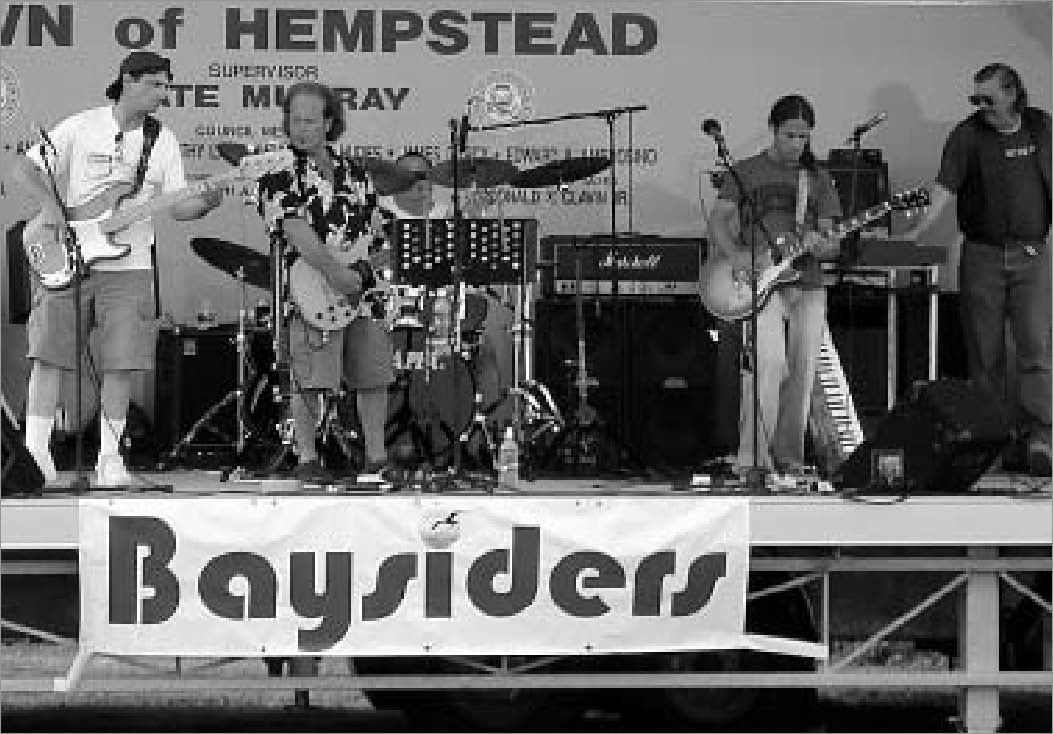
The PLCA has worked hard over the last 75 years, and has kept our community small when there was the threat of development both within our town borders as well as close by.When the private beach clubs between Lido and Point Lookout declared bankruptcy, it was the PLCA that fought to keep them from developers and allow us the buffer between us and the rest of our barrier island.
On July 8, 2006, the Point Lookout Civic Association organized a 75th birthday party for our town, held at the ballfields. Our local businesses and organizations – JoJo Apples, Marybeth’s Ice Cream, Merola’s IGA, Olive Oil’s, Point Artworks, Scotty’s Buoy Bar, and the Point Lookout Fire Department – organized booths serving food, soft drinks and beer.The PLCA and the Historical Society sold hats and held raffles.There was cotton candy and face painting and inflatable slides for the children. People brought beach chairs and blankets and settled down on the grass to enjoy our local talent – The Baysiders, St. Elvis, and Killer Joe & the Lido Soul Revue. It was a magical day and night, with children running around and dancing in front of the stage, people laughing and meeting old friends.
The success of that day, under the leadership of President Herb Abbe, depended on a small group of volunteers who gave up their free time to make sure everything would run smoothly on the day itself, and it did. Becoming a member of the PLCA costs $35, and the committees always need more volunteers. It is heartening to see what can happen when the community comes together. Join and get involved. �
Rosemary Dowling
It is impossible to write about the Point Lookout Historical Society without writing also of Rosemary A. Dowling.
She was its founder, its curator, its leader. Her exhibits were legendary – whether she was celebrating the houses, the beaches and inlets, the businesses and bars, the people from our collective past who made our community unique– there was always a crowd, always someone arguing or embellishing. She was always at the center of it, taking it in, asking for a copy of a family photo, cornering someone to sit down for fifteen minutes to clarify a point.A woman of endless energy,Rosemary Dowling was able to combine civic spirit together with a fierce sense of family and a sharp wit. It is fair to say that she did not suffer fools and she was always sure in her convictions.
One day,which,depending on the memory could be a long time ago or seemingly just past, the former Rosemary McLoone of Flatbush met a young Thomas Dowling,and they fell in love. They raised five children together, Rosemary (Rary), who now co-chairs the PLHS,Thomas, Jimmy, Maureen, and Kristina.They became grandparents to 11 (now 12) grandchildren.
They made their lives in Point Lookout, in a unique house on Ocean Boulevard that reflected their love and interests.They gave back to their community in so many ways. It is incredible to think that they were each President of the Point Lookout Civic Association (as was Rosemary’s brother Jack McLoone) besides being a parent, and a spouse, and if that were not enough she was a volunteer or leader in so many other causes. She didn’t need her name on the letterhead, she didn’t need anyone else to know; she was always there when you needed her.
She was always in my life.The Dowlings were close friends with my parents, the boys were childhood friends of my brothers, our families owned a boat together a long time ago. In Point Lookout you just become intertwined with some families. Later, as an adult, I would run into her at the beach, where she seemed to set up her summer office, sitting with her children and grandchildren; again, always at the center, always with that incredible tan and Cheshire Cat smile, always glad to see me or my brothers or our children and, always and forever, formidable and strong. It is that strength – that sureness in herself and her surroundings that I will remember
In losing Rosemary Dowling, we have lost a driving force, and it is a testament to her vision and energy that the PLHS has continued to be such a thriving, productive, positive voice in our community.
She is missed by so many and is present in all the work that we continue on her behalf. �
The Editor
Mel Brown
Mel Brown came to Point Lookout in 1929, when the streets were unpaved and there was no electric service, the houses at night lit by kerosene lanterns; the community as we know it today was brand new.
His family was from Queens; they summered on Freeport Avenue and it was there that he met his future wife, Audrey,“the girl next door”.She was a friend of his sister Virginia’s,and through those summers, and the letters that follow summers, they fell in love and were married in September of 1934.
Mel graduated from University of North Carolina, Chapel Hill and worked first at Dun & Bradstreet, before joining the US Navy. When he was decommissioned, Mel returned to New York,to work for Morgan Guaranty Trust. All the while,he and Audrey,and soon their three children (two daughters and a son) were living in Freeport and coming to the Point during summers, staying with family, sitting on the beach, reconnecting with old friends. They bought a house of their own on Bellmore Avenue – the house that, fifty years later, Audrey lives in today, as she is visited by her and Mel’s children, grandchildren, and great-grandchildren. Five generations at the Point!
Many years ago, Mel noticed the past of Point Lookout slipping away, and he began to collect material to keep it alive, to write about his life, and the life of this community, in a series of signed articles for the Community Outlook.
Mel Brown passed away in 1981 and yet, if you are lucky to visit the archives, you will see his personal touch on so much of what has been recorded and saved. It is our privilege to reprint one of his articles in this journal and to recognize him as our first town historian. �
The Editor
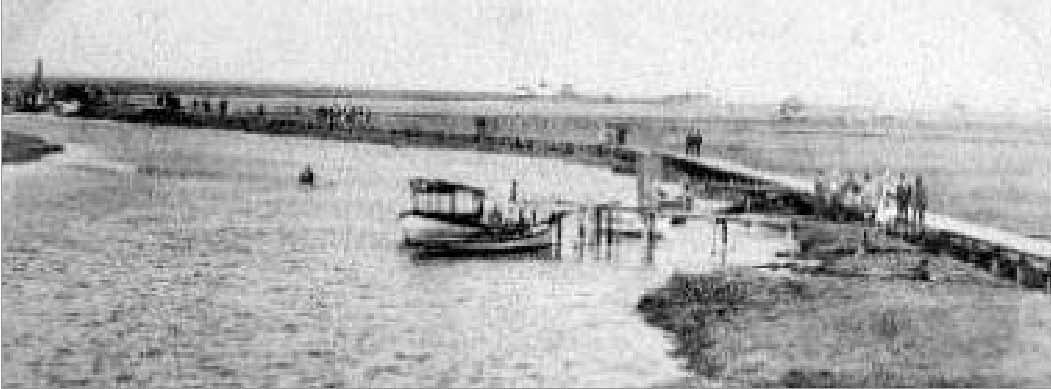
Point Lookout Historical Society A committee of the Point Lookout Civic Association Box 854, Point Lookout, NY 11569
Dear Point Lookout Home Owner:
As you may know, the Fire Department’s Fire Police Company generously provides us space for our Museum and Home. Our collection of historical exhibits of Point Lookout, plus the display of photographs, stories, newspaper articles and even audio have been widely enjoyed by residents and history buffs alike.We host two historical shows a year. Please call us to arrange a tour or use of the archives.
Our town has a unique history and your home may be a part of it. Please take a few moments to help us by sending back the information below. As an example, please see Bob Calvert’s letter on the next page.
Thanks for your help.
Point Lookout Historical Society
Comments about your home
Bob Calvert
76 Hewlett Avenue
Point Lookout
August 28, 2006
Point Lookout Historical Society Point Lookout, NY 11569
Attn: Don Kelly
I have been told that my house at 76 Hewlett Avenue is one of the oldest in Point Lookout. Apparently, it was originally moved from the ocean where it served as a Coast Guard station house occupied by 3 servicemen.
The house was built in 1910 which would make it now 96 years old. I purchased it in October 1968 from Irene Stanley and found some very unusual items in the attic including the following:
- —
- 2 steamer trunks
- —
- A captain’s commode
- —
- A bailing hook
- —
- A hand-made hemp boat bumper
- —
- A pewter coffee (or tea) pot complete with a wooden handle and the initials of its maker.This now resided in our daughter Ann’s historical home in old Roslyn.
- —
- A wood inlaid serving tray, also with Ann
Don Black, who lived across the street from us, told me that, after school, he and Don Byrne used to roller skate on the porch that surrounded the house.The old porch is gone now, but we still maintain and outside porch and an enclosed porch in the front of the house.They are two of our favorite “nooks” in the house.
I believe this home has one of the driest basements in the Point as we have never had any water seep in regardless of the severity of storms.The full basement has 6 x 6 wood beams (possibly oak) running its length and the entire basement is built like a fortress. Wainscot trim was used through the interior which has helped maintain the charm.
All in all, it is a great old house that my family and I have enjoyed for many years with many years to come….
Bob Calvert
Sponsors
Herb and Sandy Abbe Anonymous Sonia Berger Brendan and Christina Cahill Kevin M. Cahill, M.D. The Cozzi Family Lynn and Rob Deverna The Gallucci Family James and Rosemary Gibson Larry Grassi and Karen Latimer The Haff Family Robert Hanlon, Jr. The Hansen Family The Heneghan Family John D. and Linda MacDonald John and Mary Manning Michael and Julie McTernan Martin F. Nester Gerald Ottavino The Paolino Family Susan and Francis X. Ryan Ted and Jean Van Erk

Point Lookout Historical Society
A COMMITTEE OF THE POINT LOOKOUT CIVIC ASSN.
In memory of Point Lookout’s original historian, Mel Brown,
charter members Arthur Thompson, Gerry Boyle,
and our society founder, Rosemary Dowling.
MEMBERS EMERITUS
Audrey Brown, Peggy Fanning, Phil Mc Caffrey
HISTORICAL CONSULTANTS
Bob Doxsee,Tom Bauer
MEMBERS Sandy Abbe, Brendan Cahill, Karen Clinton, Marty Crowe, Kelly Curtin, Claire Curtin, Liz and Gerry Connors,Tom Dowling,Barb Fiorillo,Anthony Fucignas,Vic Fucignas,Gerry and Pat Galvin,Rary Gibson, George Hearn, Mary Healy, Bill Hemp, Don Kelly, Tad and Kathy Korndoerfer, Maura Kennedy, Marty Nester,John D MacDonald,Sue Marcote,Ron Masters,Julie Mc Teirnan,Jane Mc Graw,Jack Mc Loone, Bill Meier, Nan Newell, Frank Ryan, John Ostendorf, Kathy Panzavecchia, Jack Paz, Jane Rooney, Ted Van Erk, Bill and Pat White, Pete Zaccaria.
EX OFFICIO
Herb Abbe, Pres. Pt. Lookout Civic Association
FOR MORE INFORMATION
Box 854 | E mail: PLHS @optonline.net web site: www.pointhistory.org
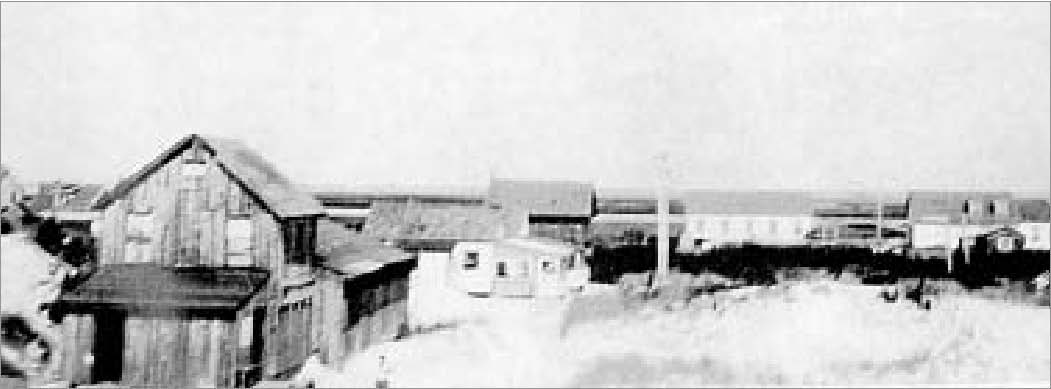
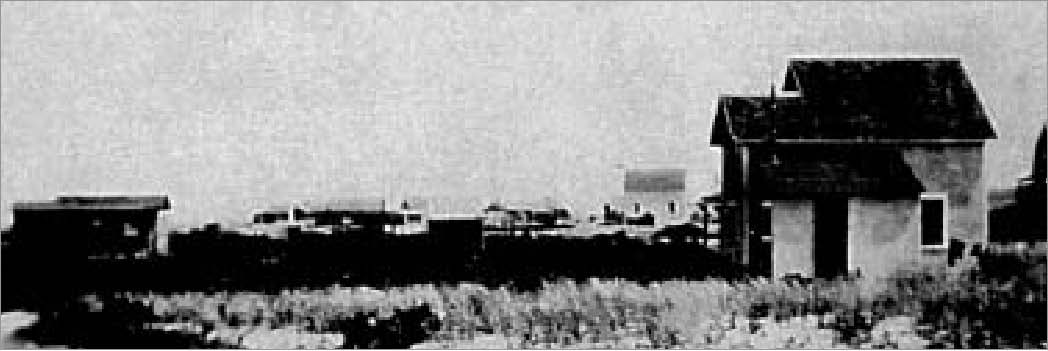
The Point Lookout Civic Association
Point Lookout Civic Association | P.O. Box 391 | Point Lookout, New York, 11569 Email: pointcivic@optonline.net
| 49
Point Lookout Civic Association—2006-2007
OFFICERS AND BOARD OF DIRECTORS
August 30, 2006
PRESIDENT
Herb Abbe
VICE-PRESIDENT
Kevin Haff
TREASURER
Chuck Hansen
RECORDING SECRETARY
Alison Brennan
CORRESPONDING SECRETARY
Kelly Curtin
| BOARD MEMBERS | |
| Ed Brown | Don Kelly |
| Tom Brown | John Manning |
| Brendan Cahill | Sue Marcote |
| Brian Crowe | Sara Moran |
| Claire Curtin | Gerry Ottavino |
| Rob DeVerna | Kathy Panzavecchia |
| Roberta Doheny | Mike Paolino |
| Tom Gallucci | Heinz Posch |
| Rosemary (Rary) Gibson | Chas Thompson |
| David Goodman | Rich Tighe |
| Larry Grassi | Ted Van Erk |
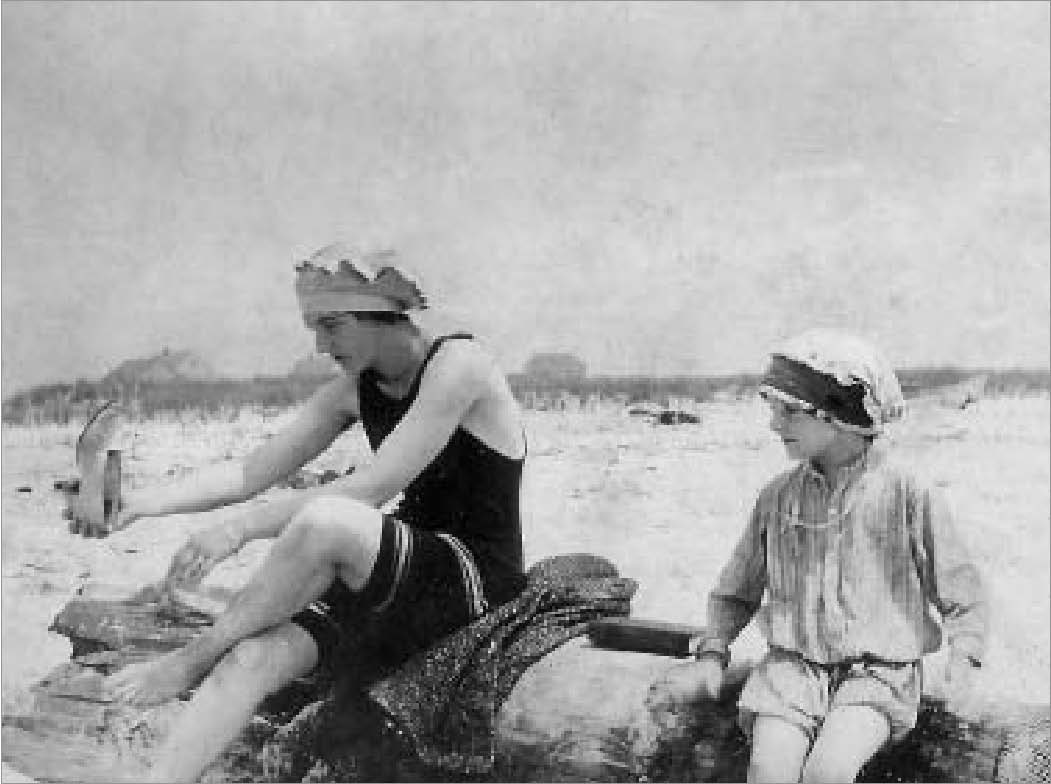

Introducing The Lookout
The Point Lookout Historical Society, a committee of the Point Lookout Civic Association, publishes an annual historical journal that disseminates the stories, memories, and anecdotes of our unique community. Learn more about the bankers and bootleggers, the businesses and the bars, the bay shacks and old clubs. The Lookout explores the stories that make our community remarkable.
Help support The Lookout by becoming a personal sponsor or taking an advertisement for your business. Checks – which are tax-deductible – can be made payable to “PLCA”, referencing The Lookout.
| Suggested Sponsorship | $100 | $250 | $500 | $1,000 |
| Advertisements (Businesses Only) | $100 Inserted Advertisement | |||
| $500 Inside Covers | ||||
| $1,000 Back Cover | ||||
Name
Address Email Address
Telephone Number
